
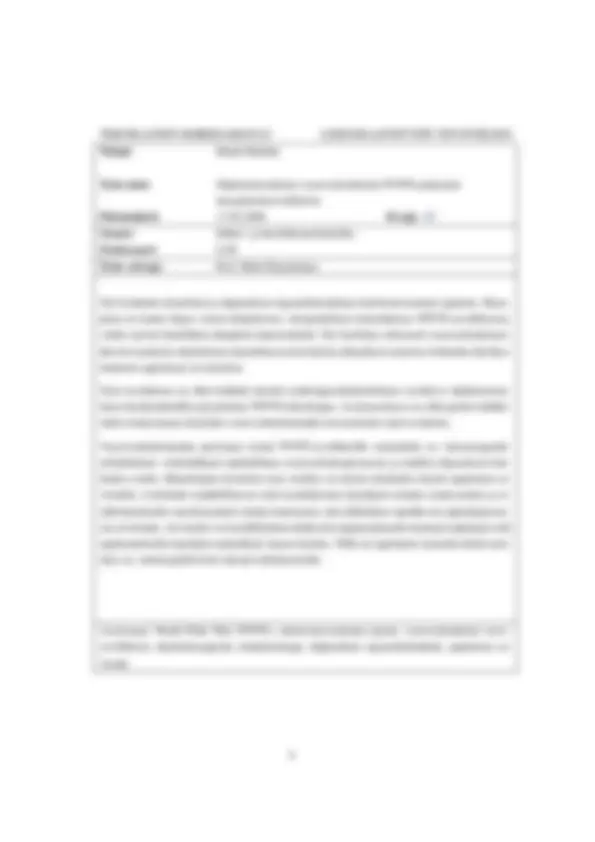
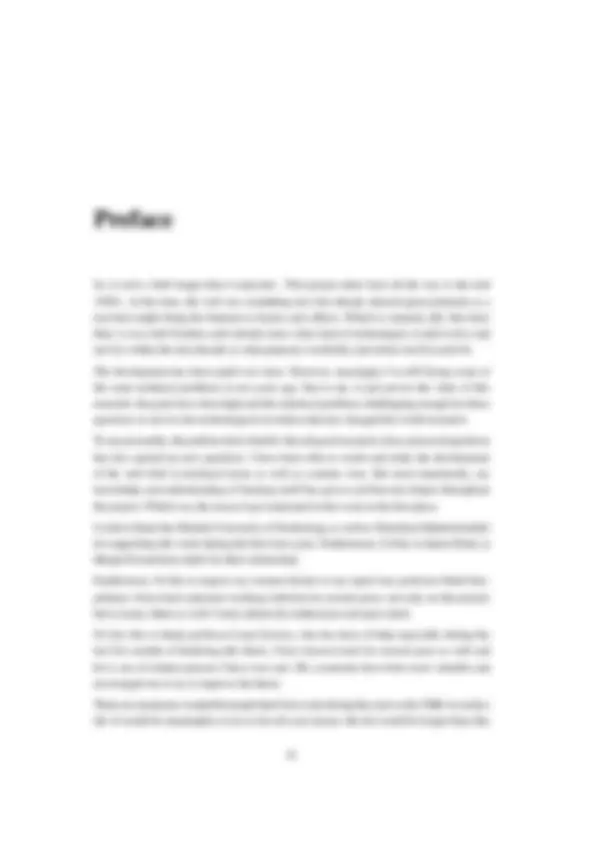

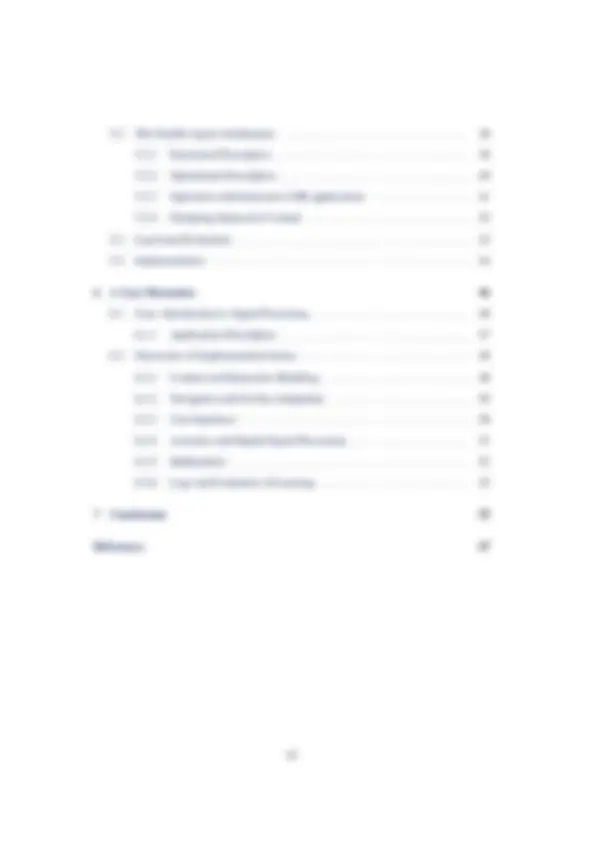
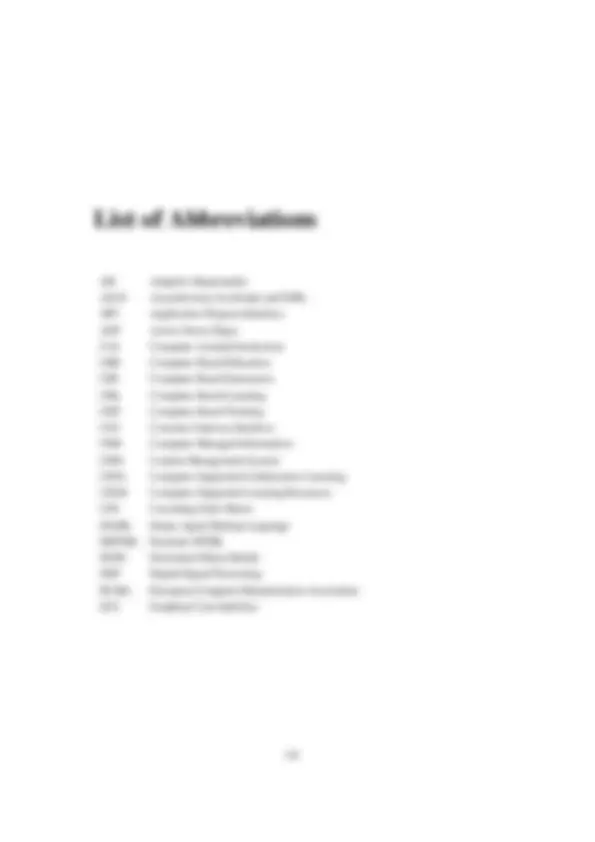
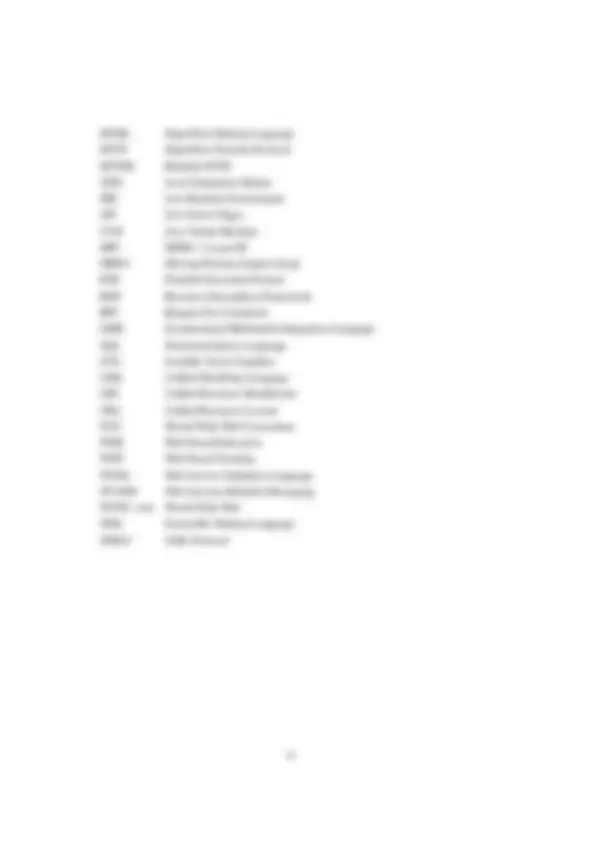
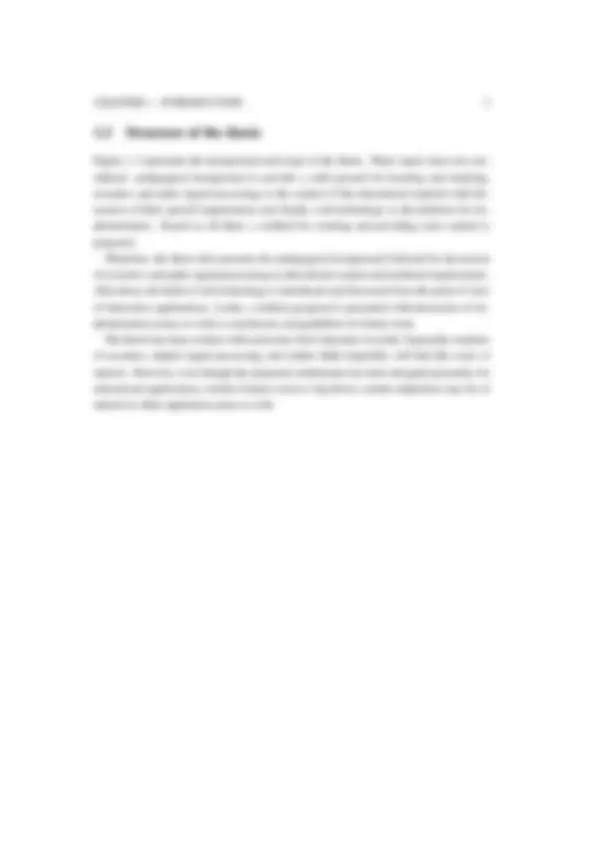
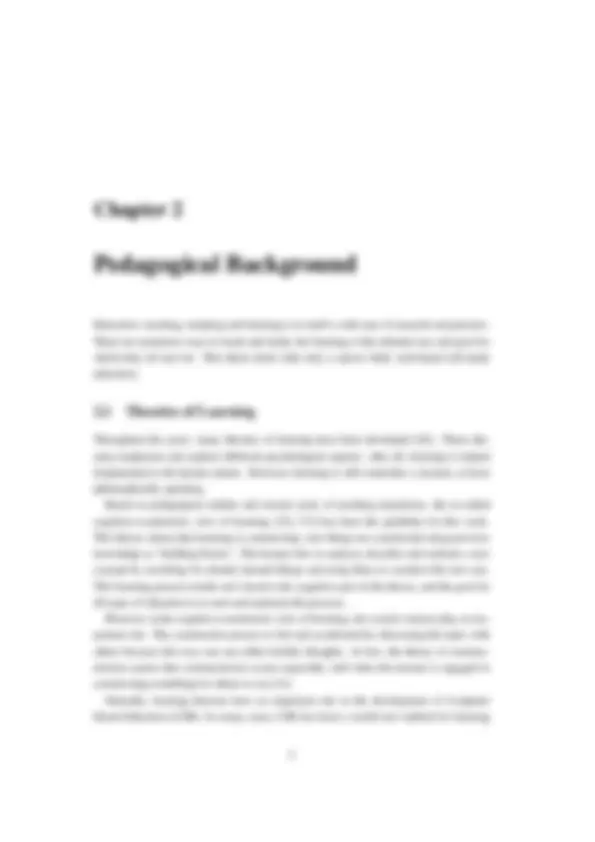
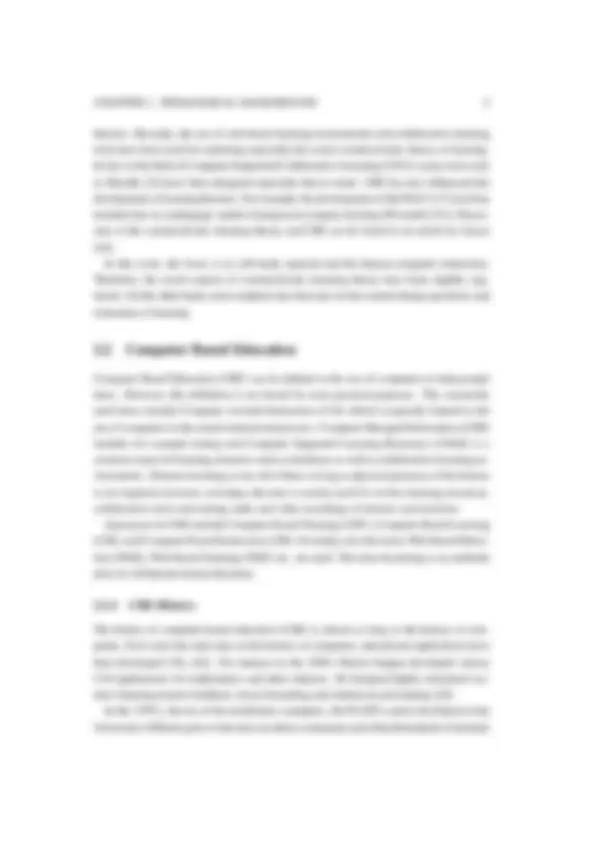
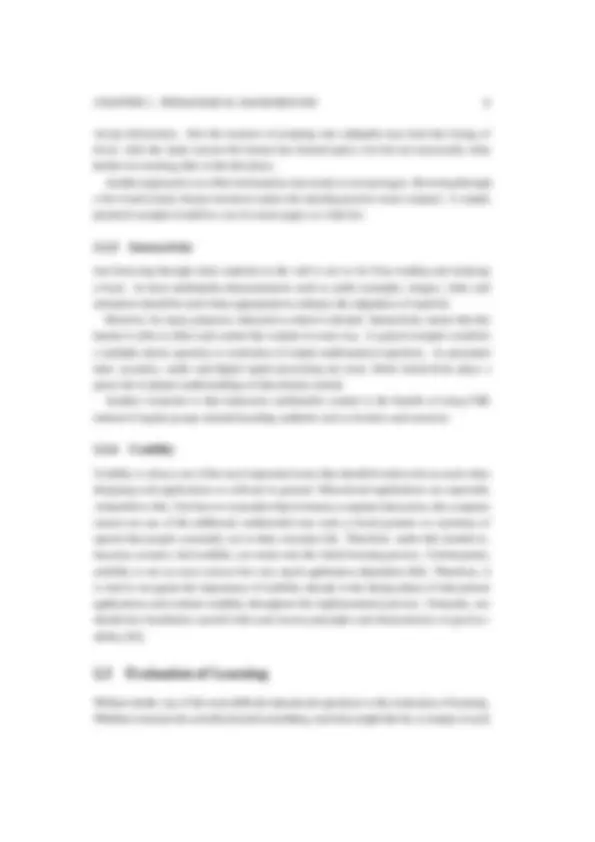
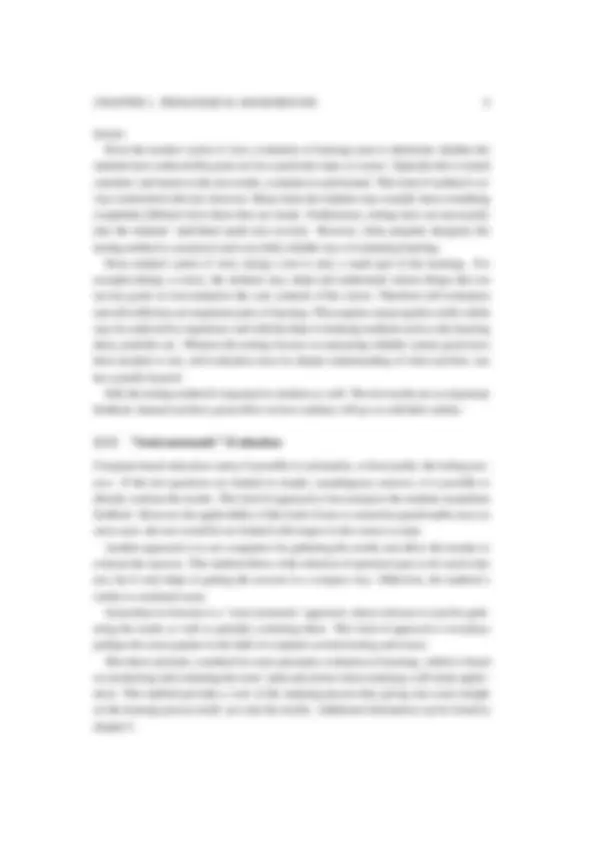
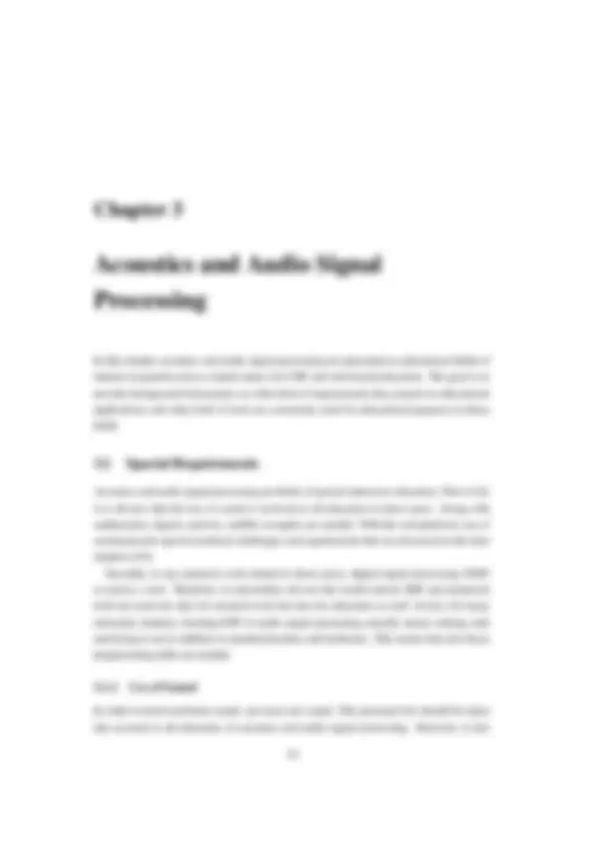
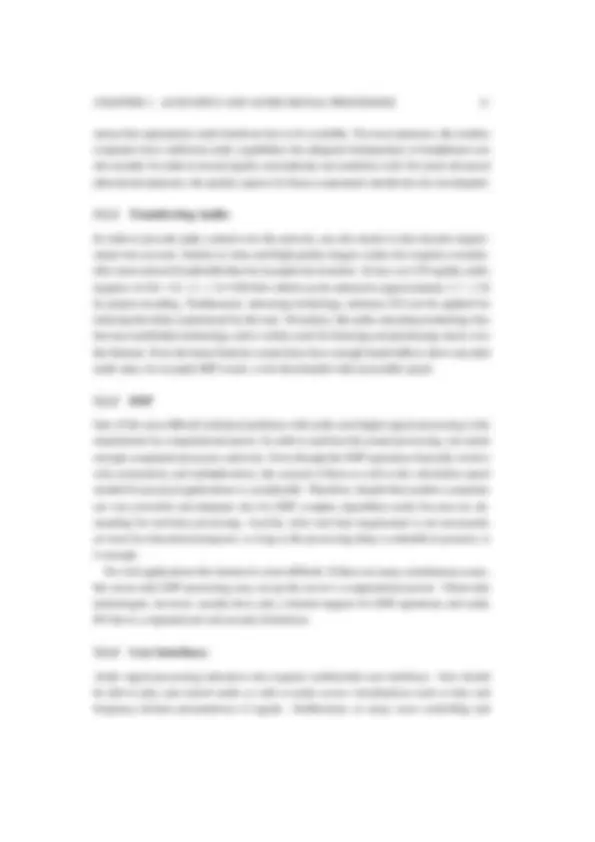
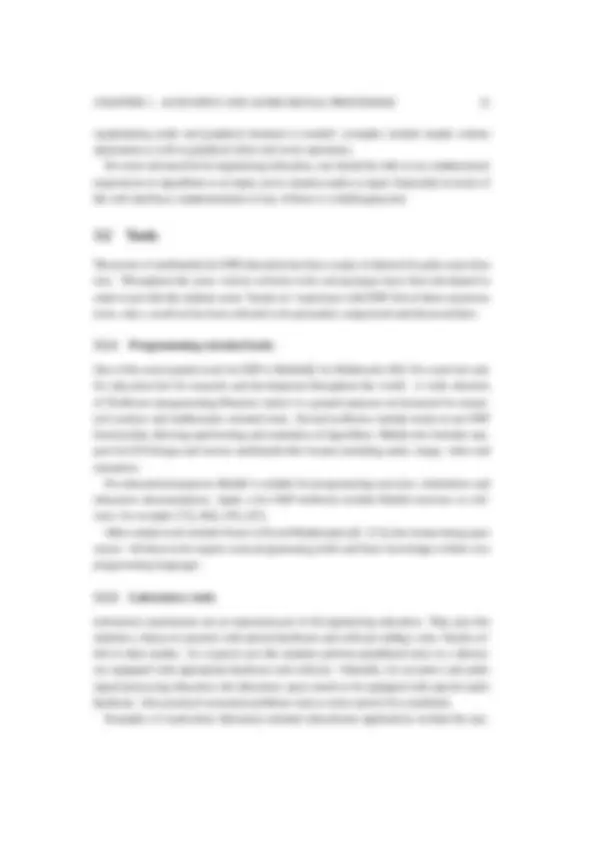
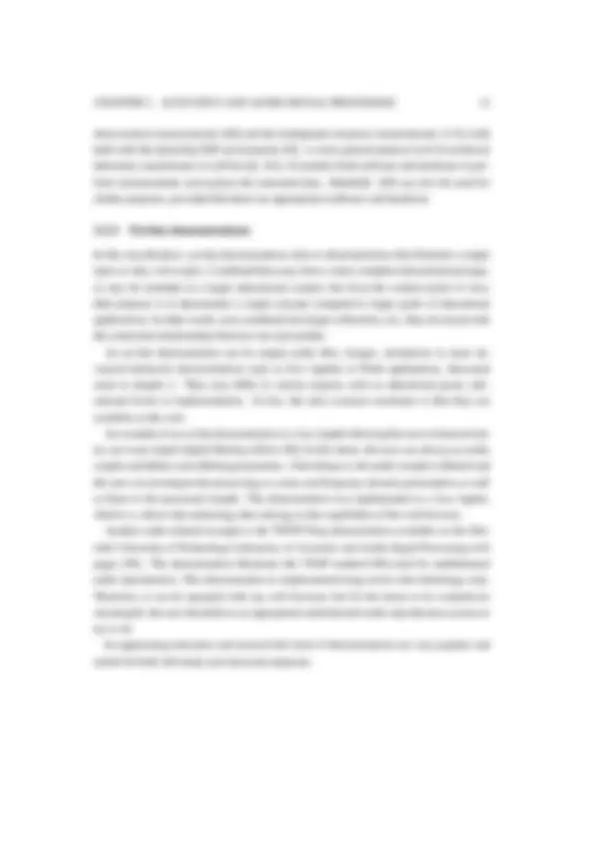
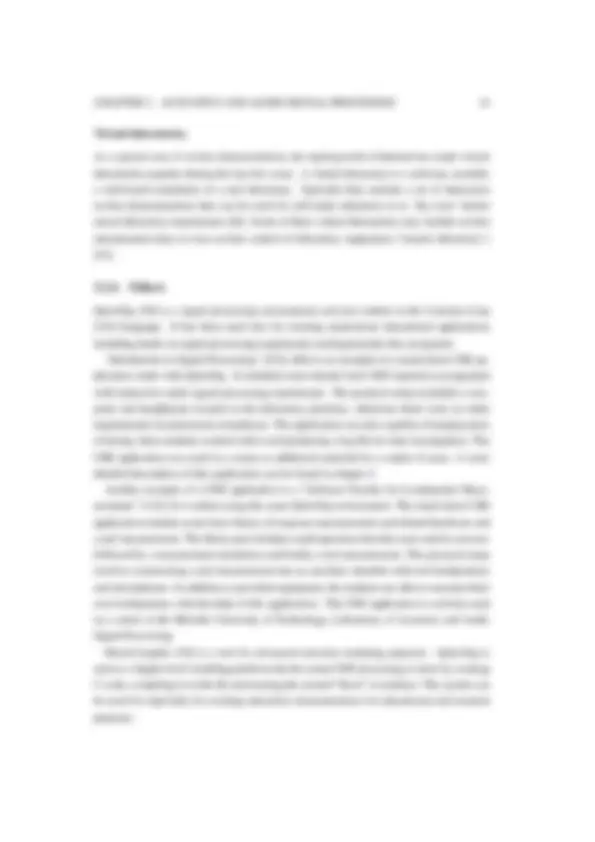
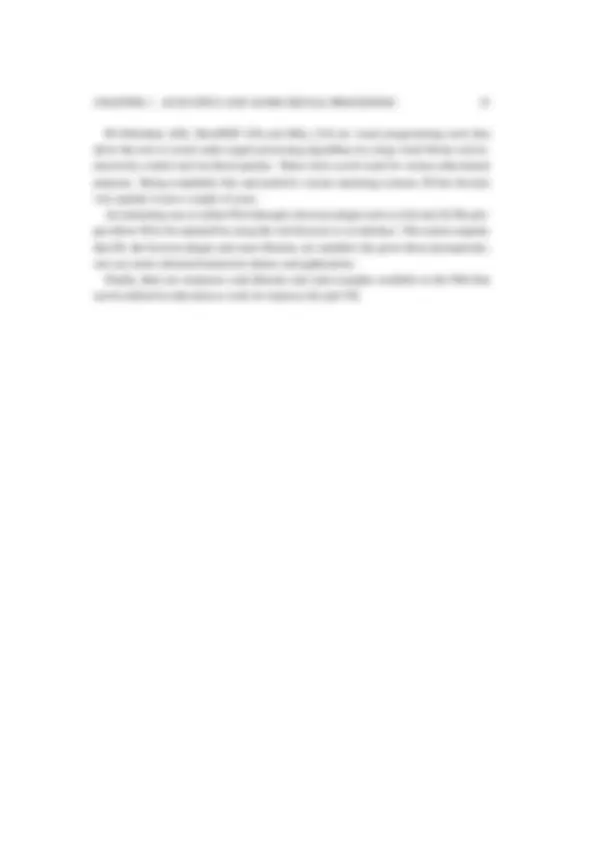
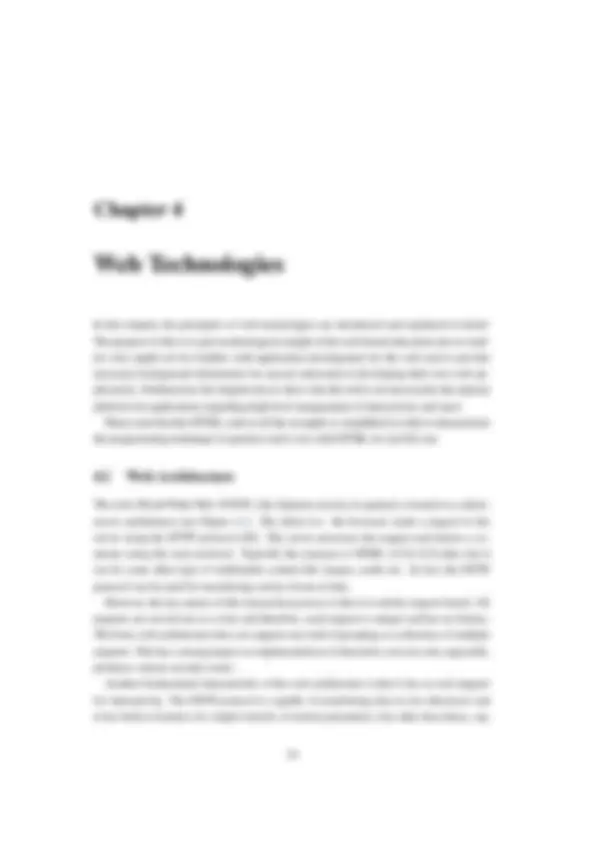
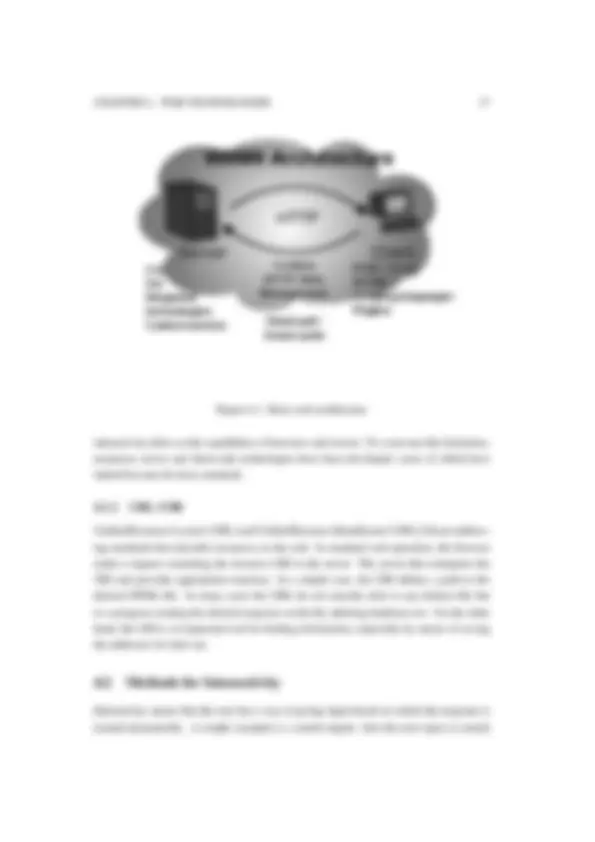
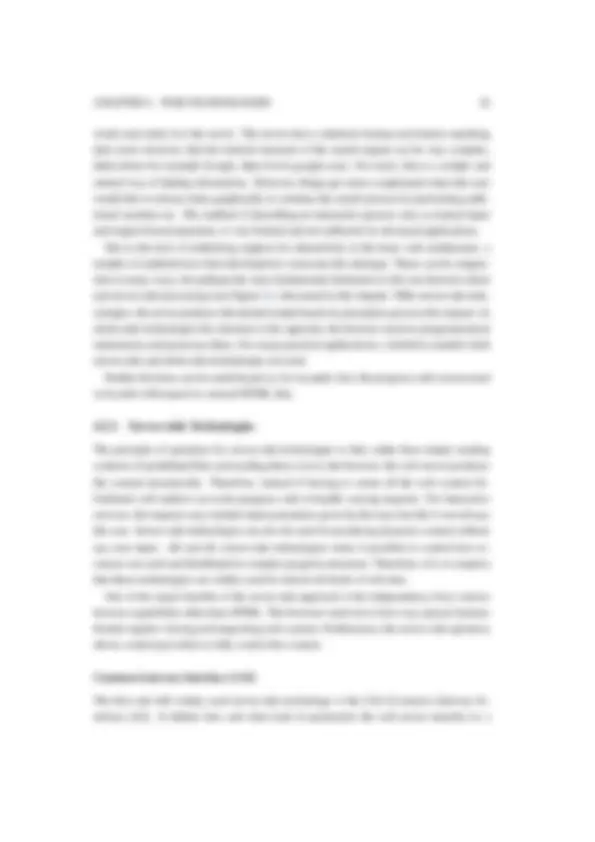
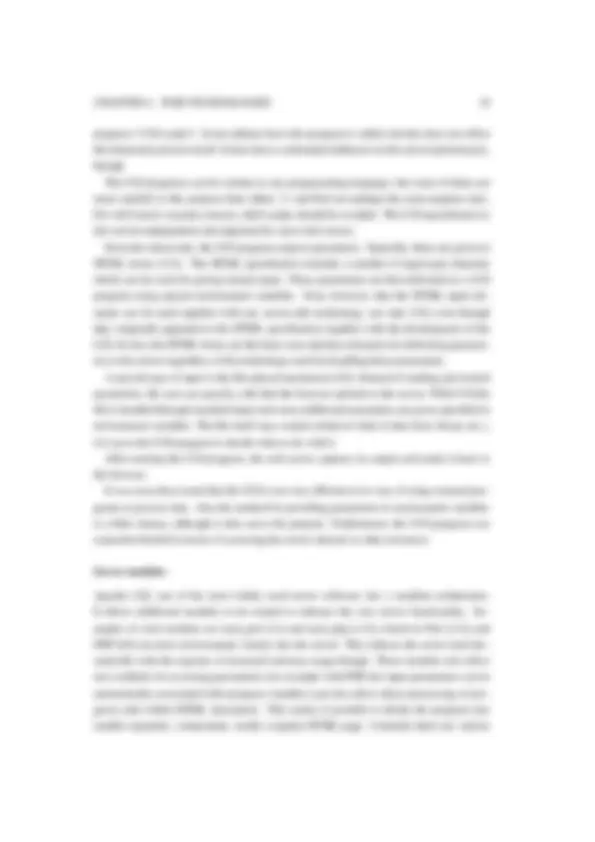
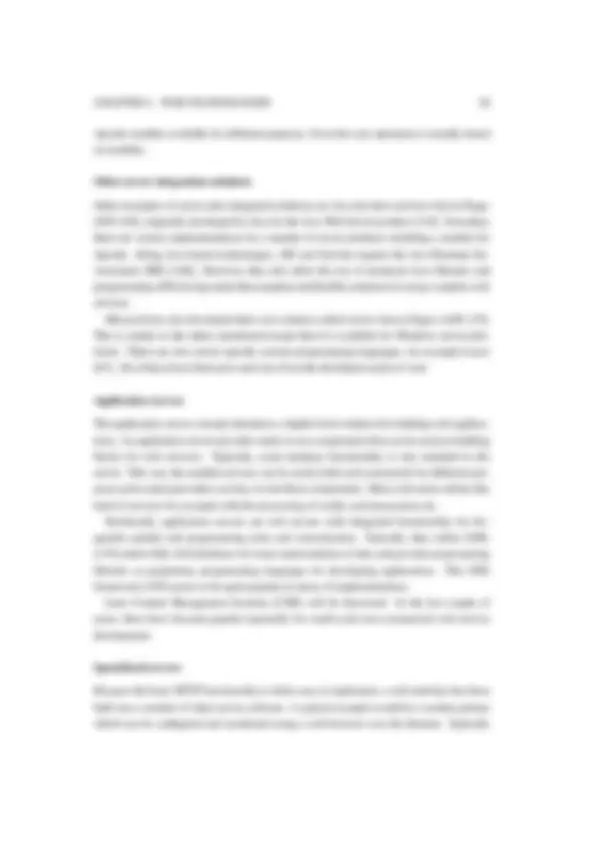
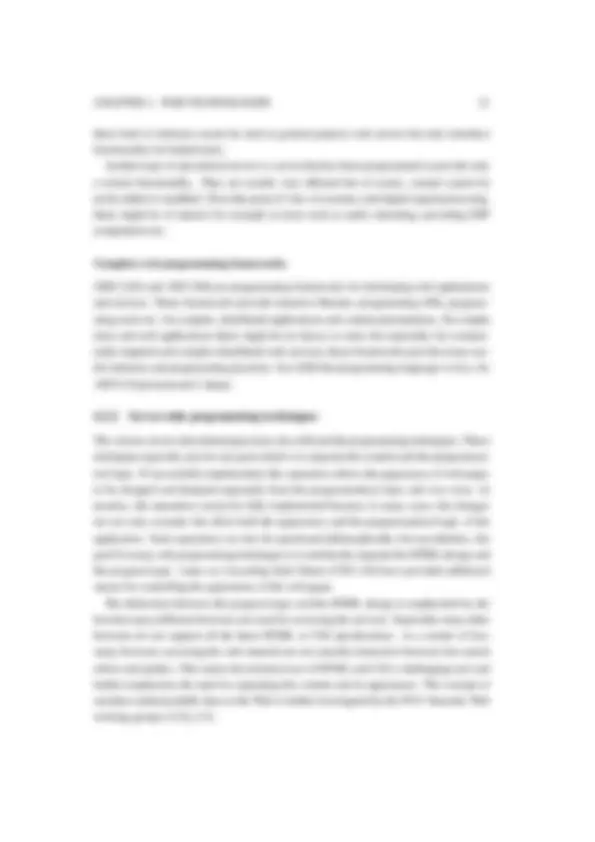
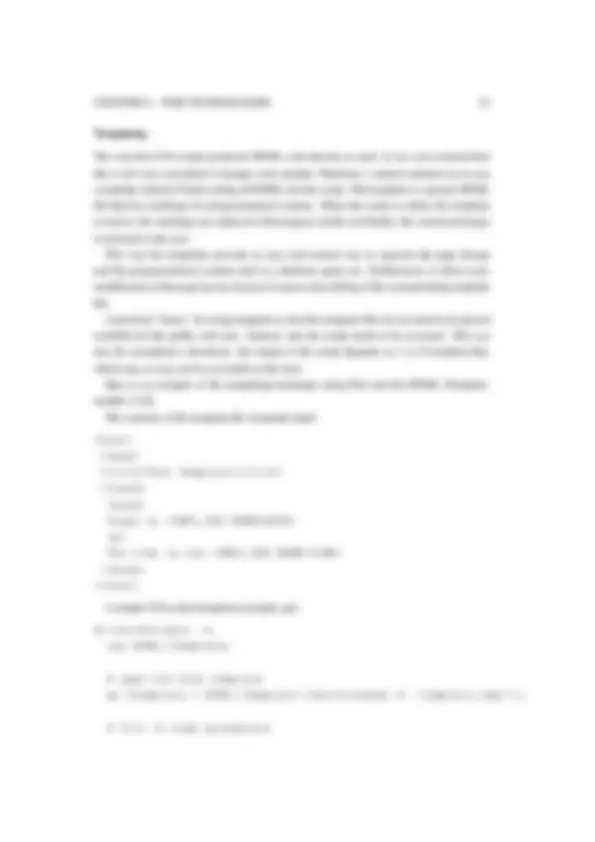
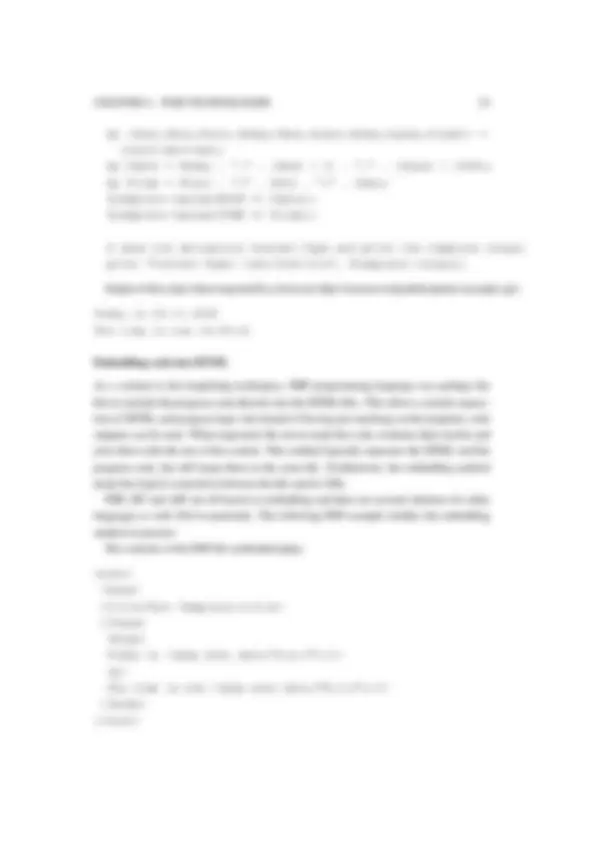
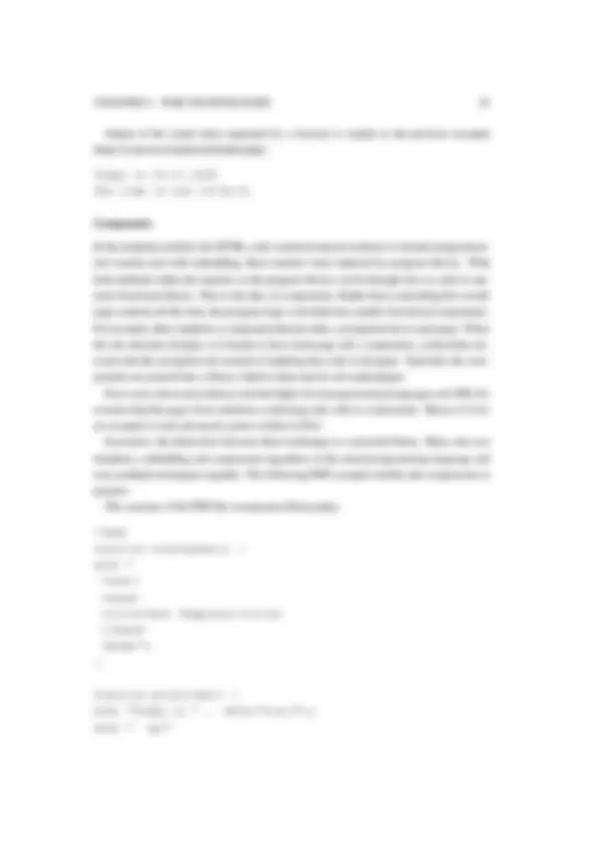
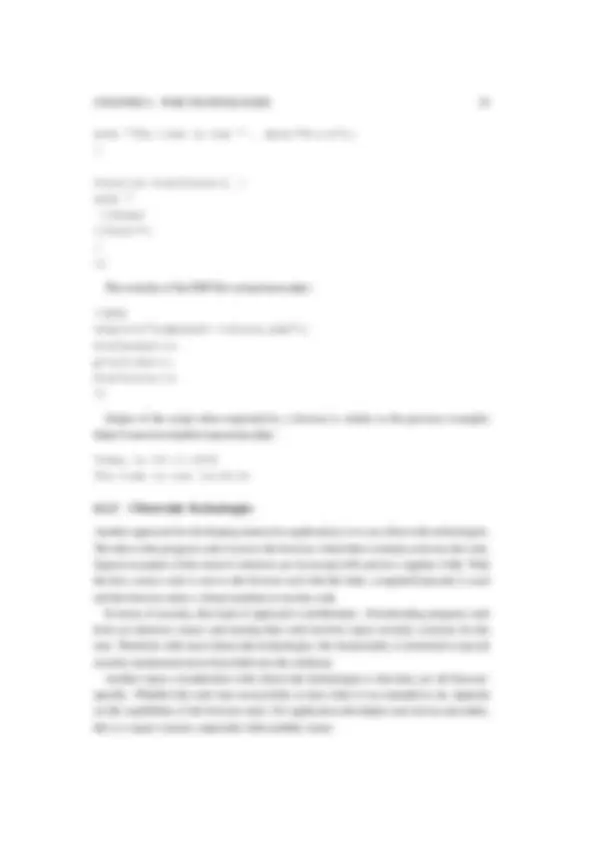
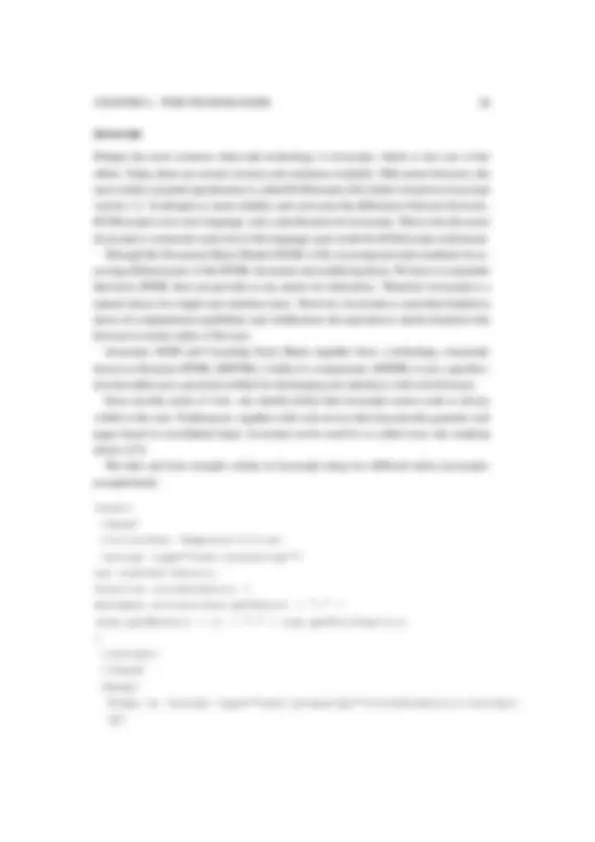
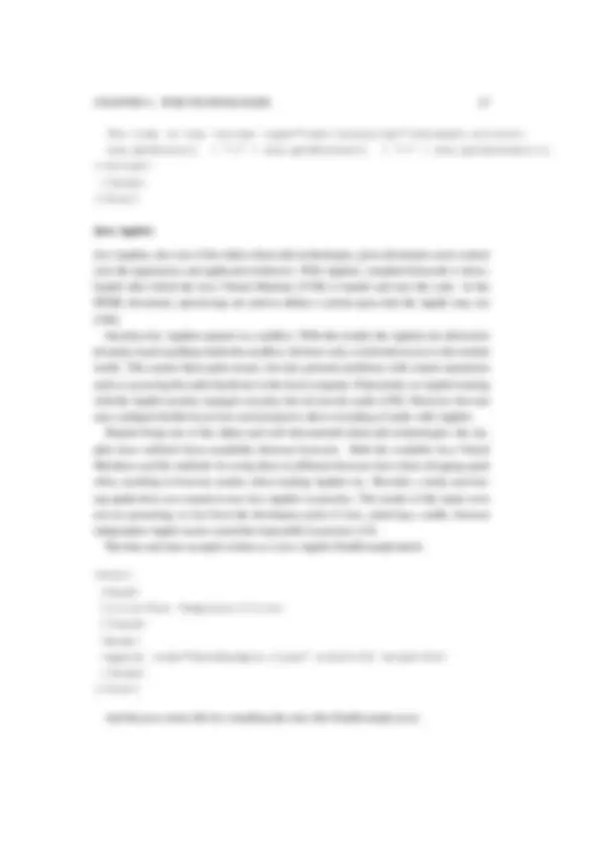
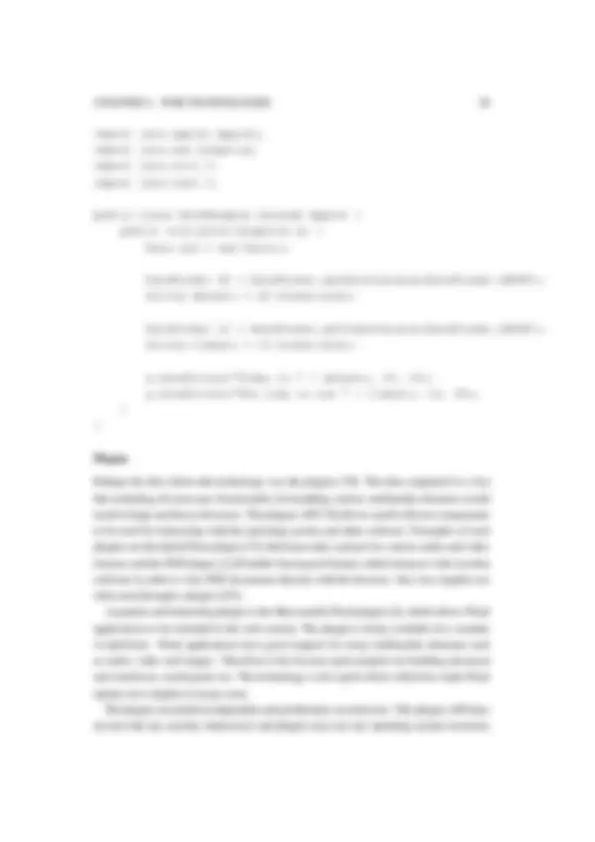
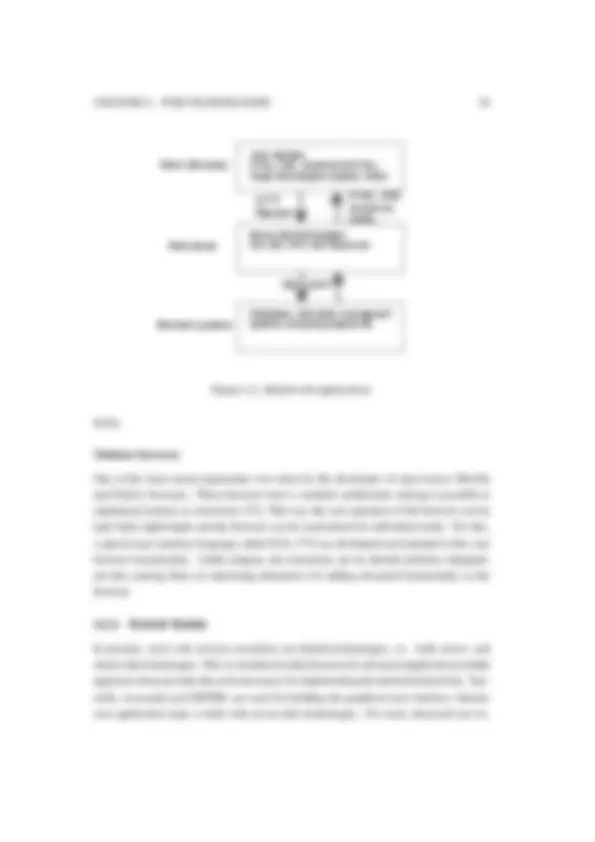
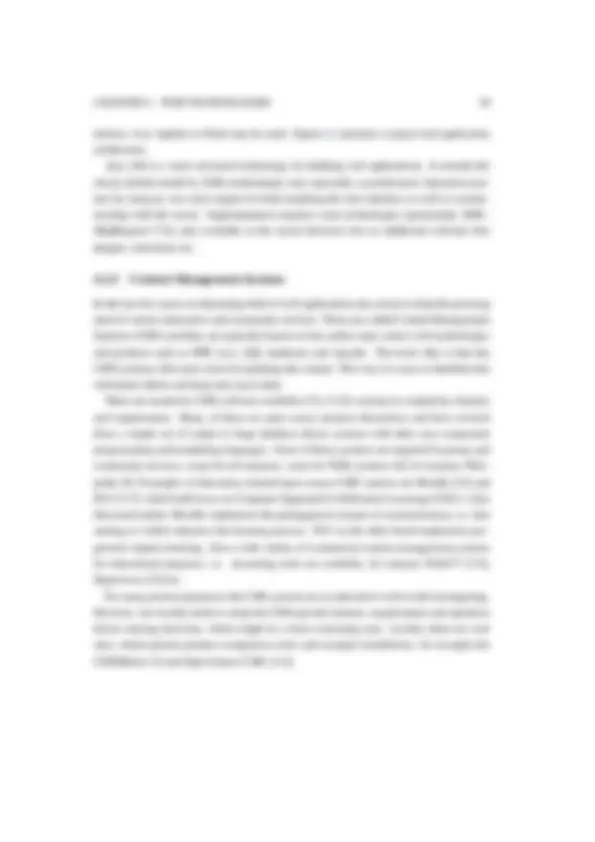
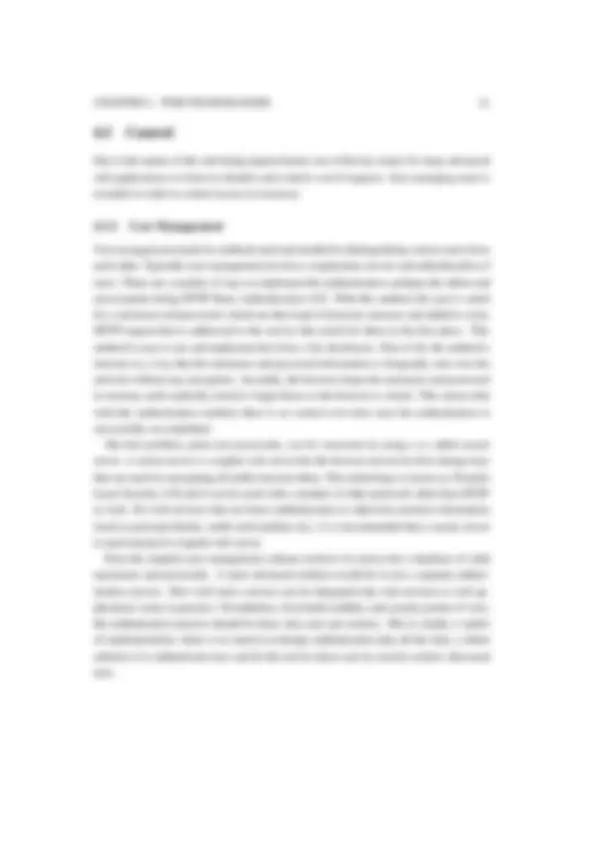
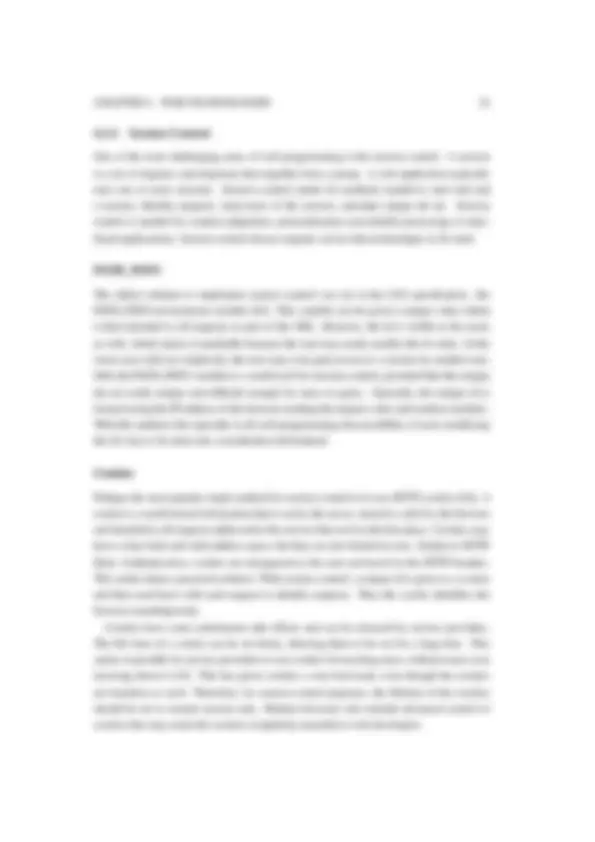
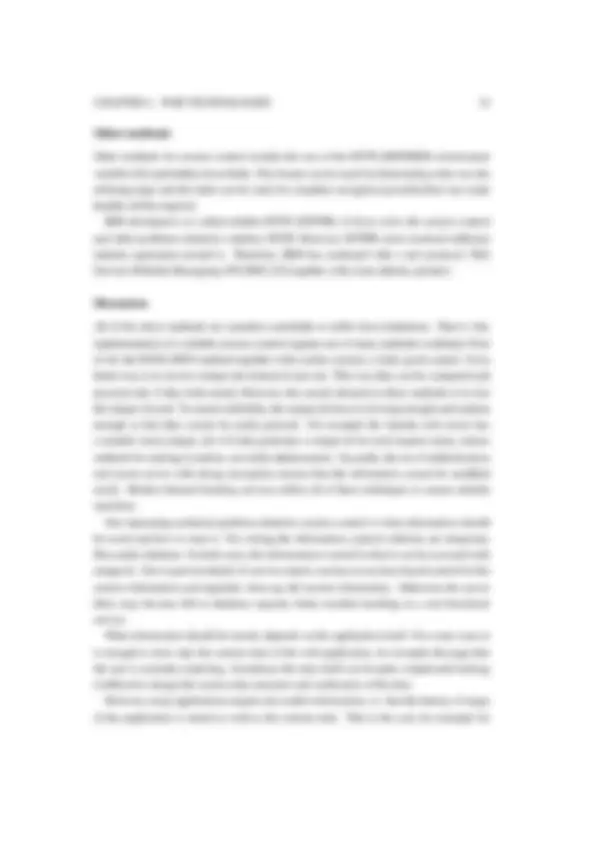
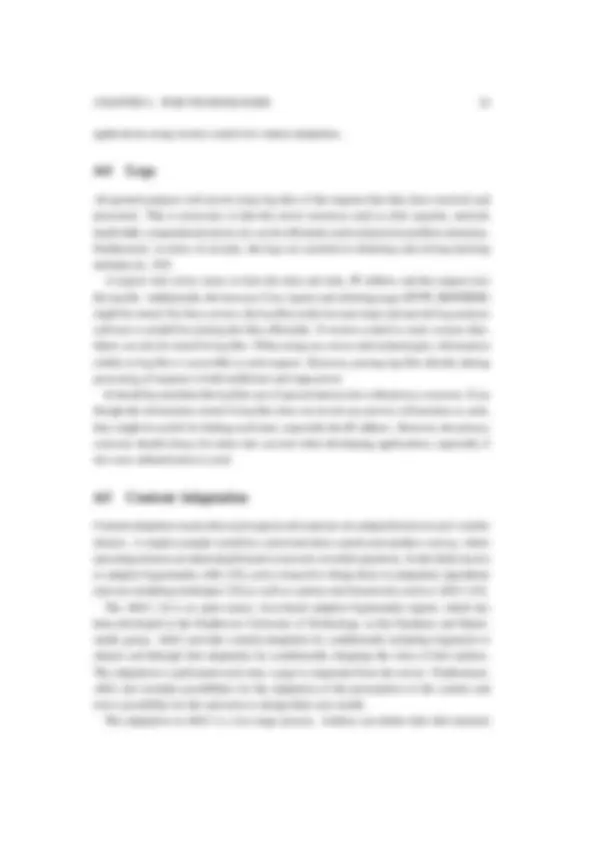
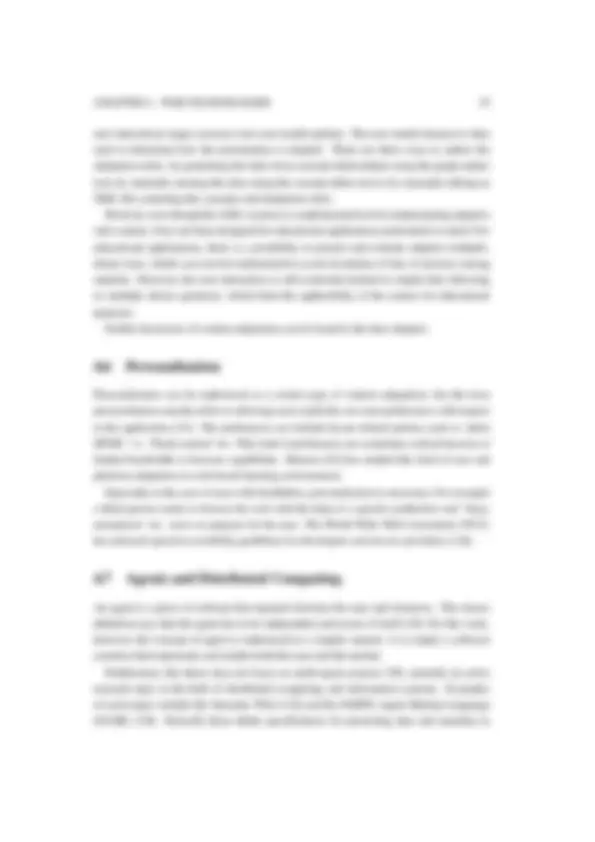
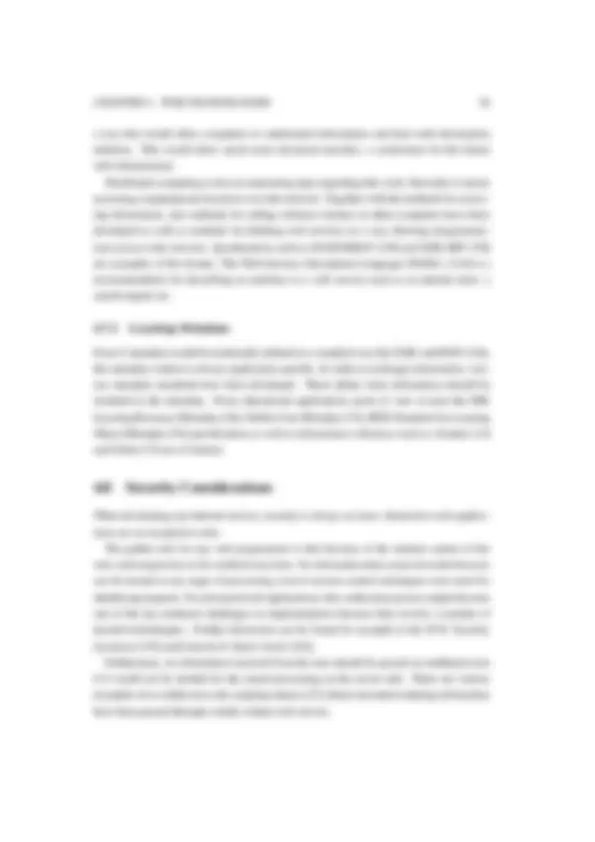
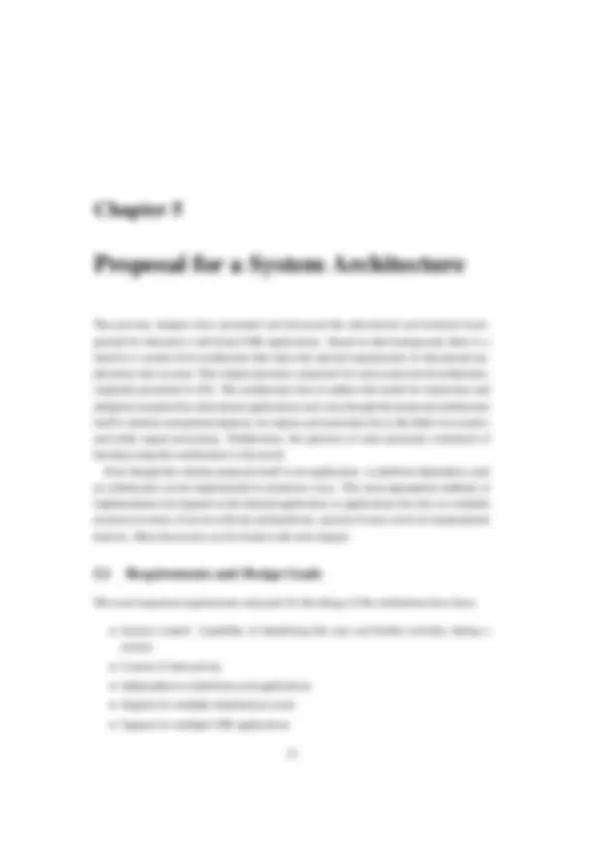
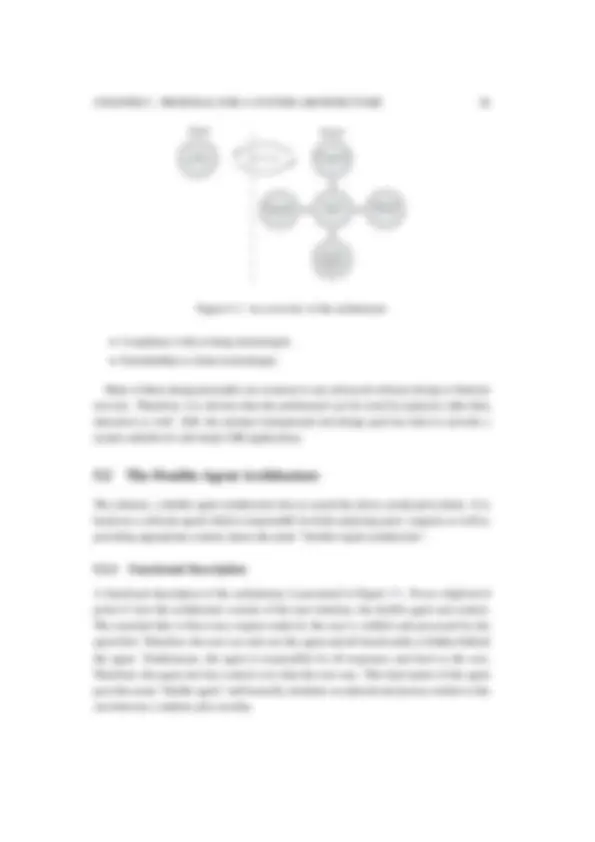
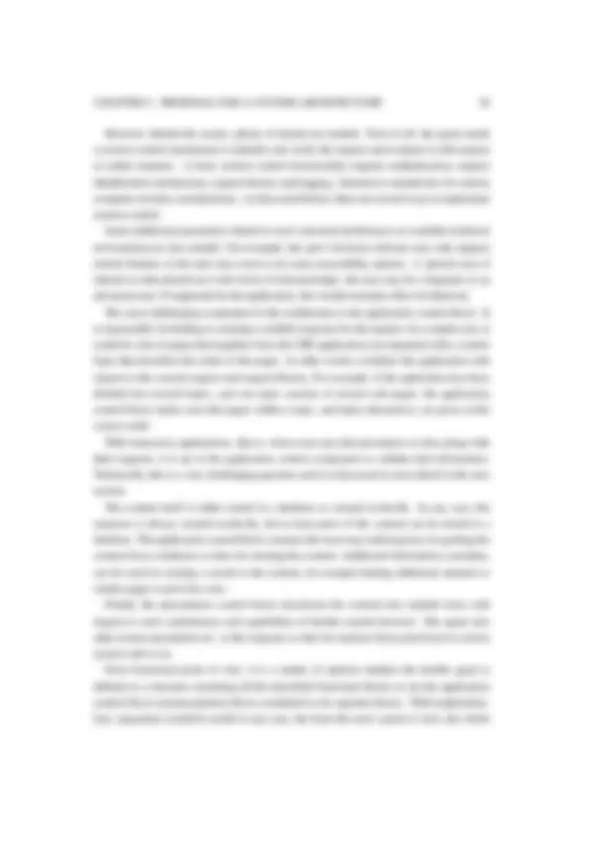
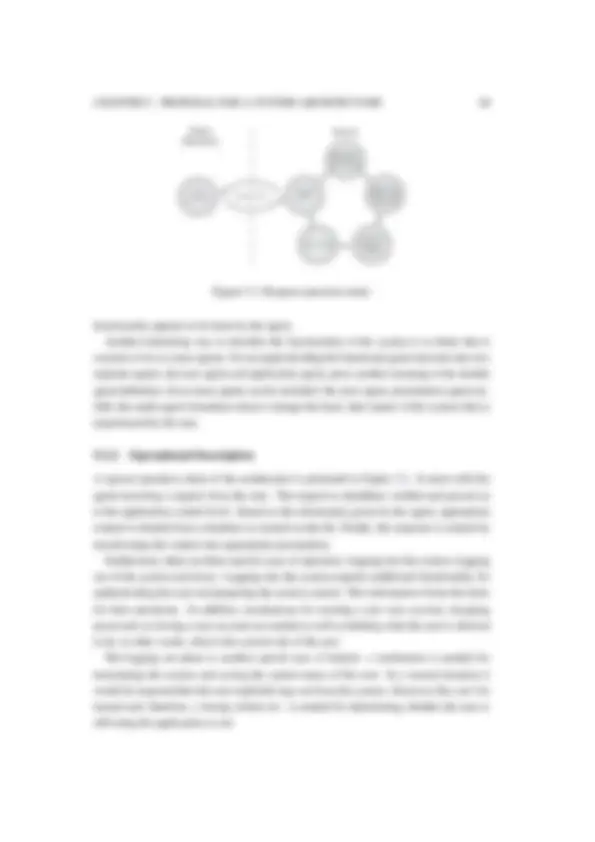
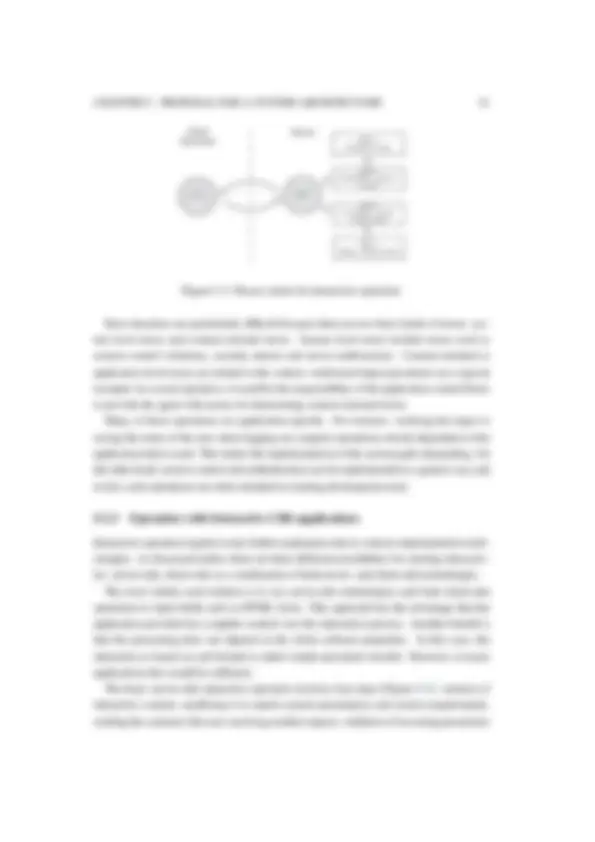
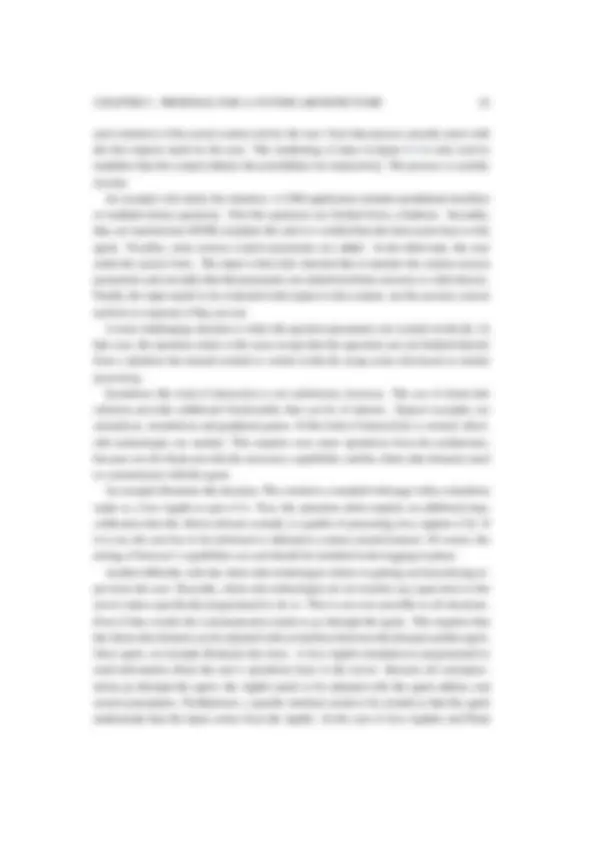
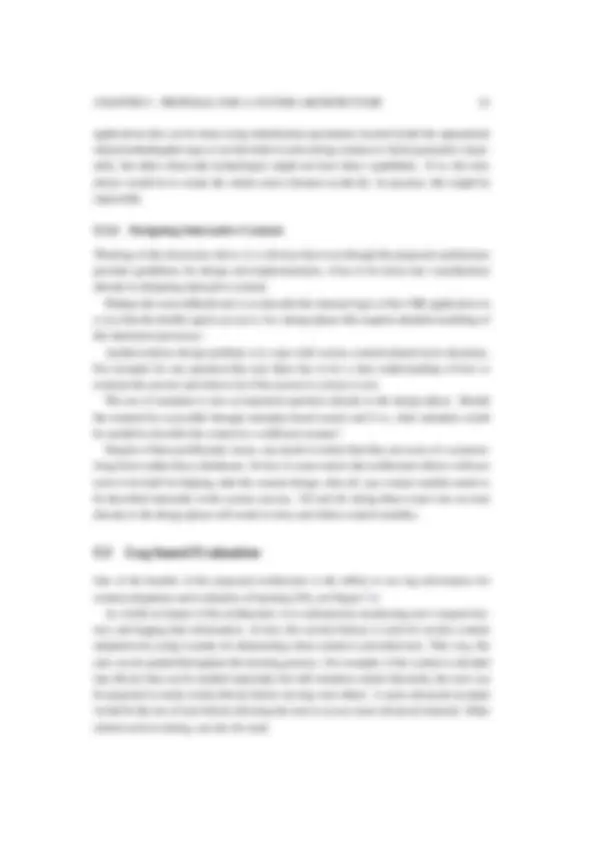
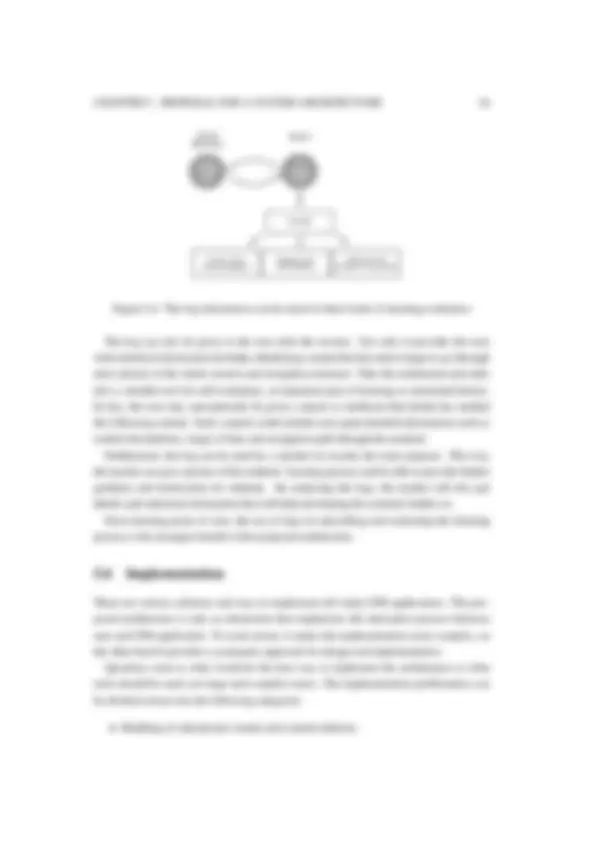
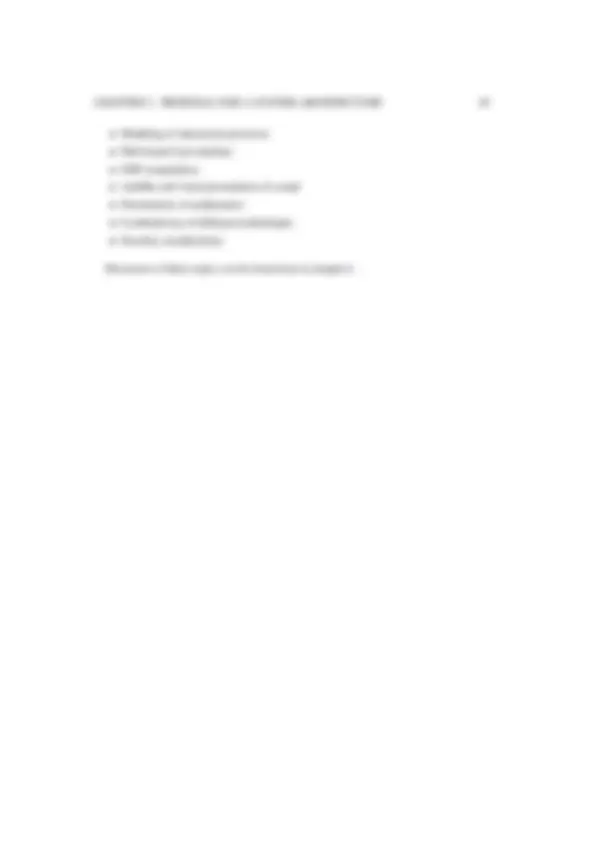
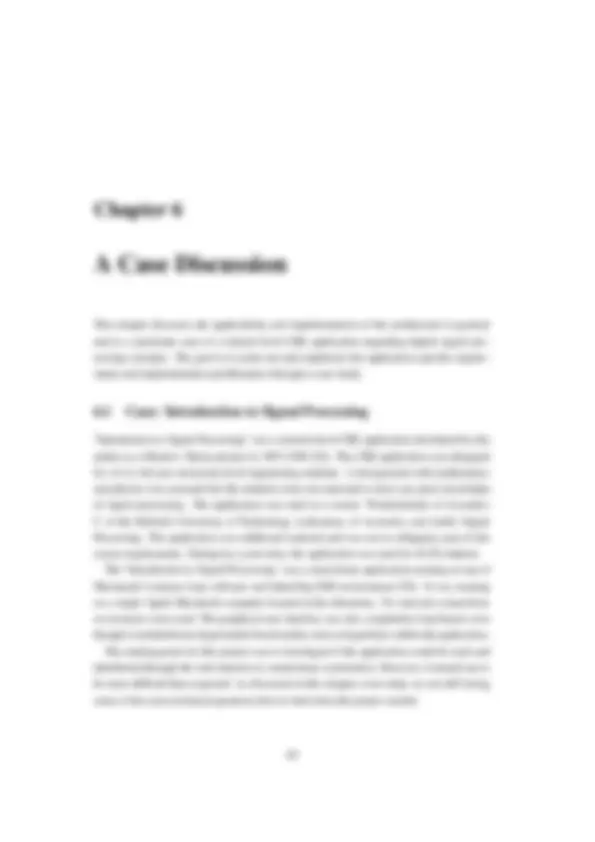
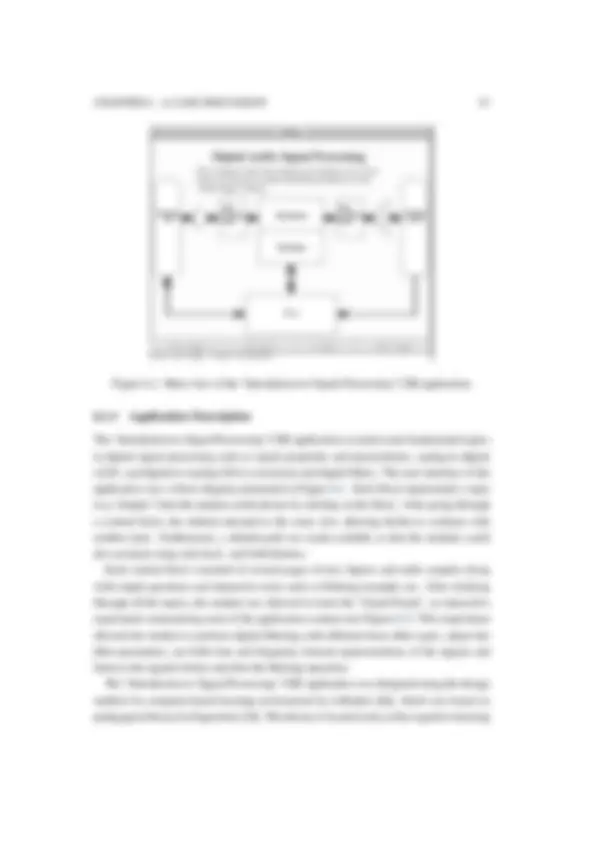
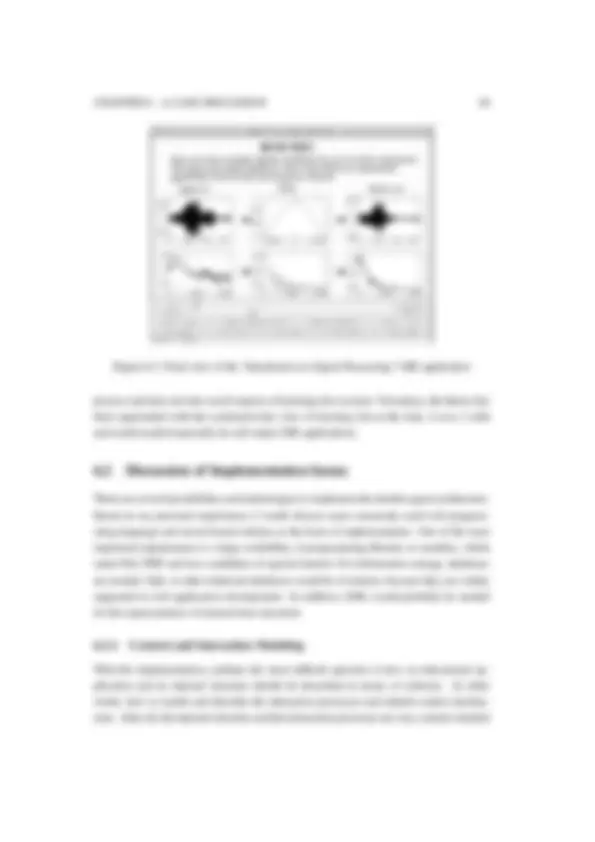
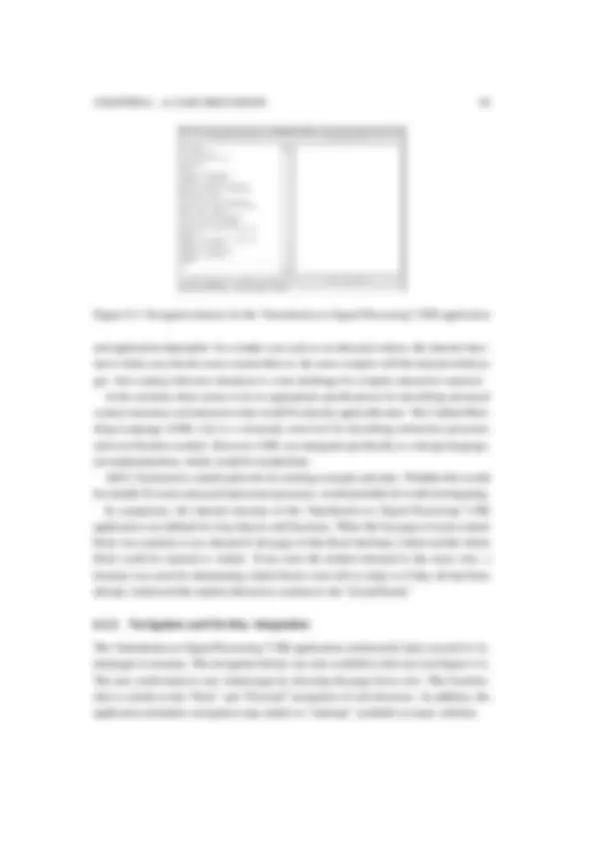
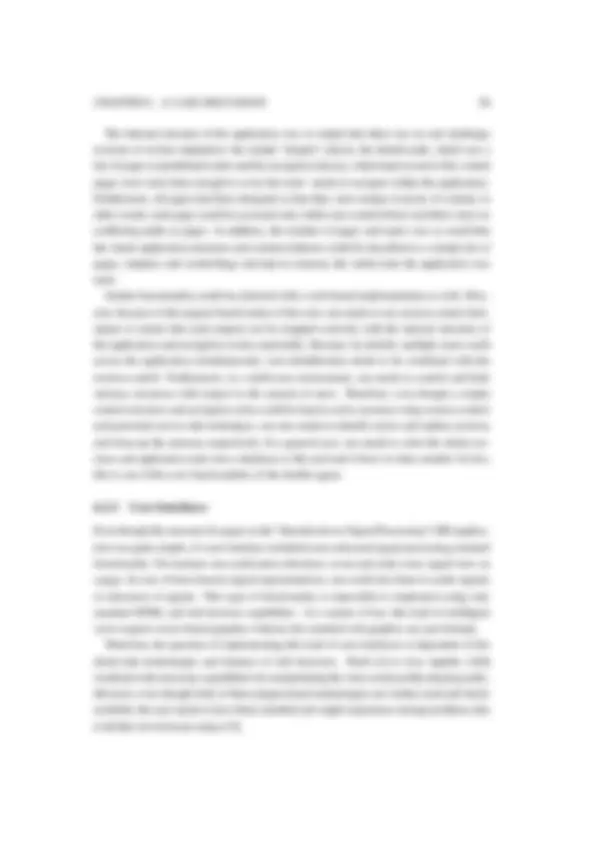
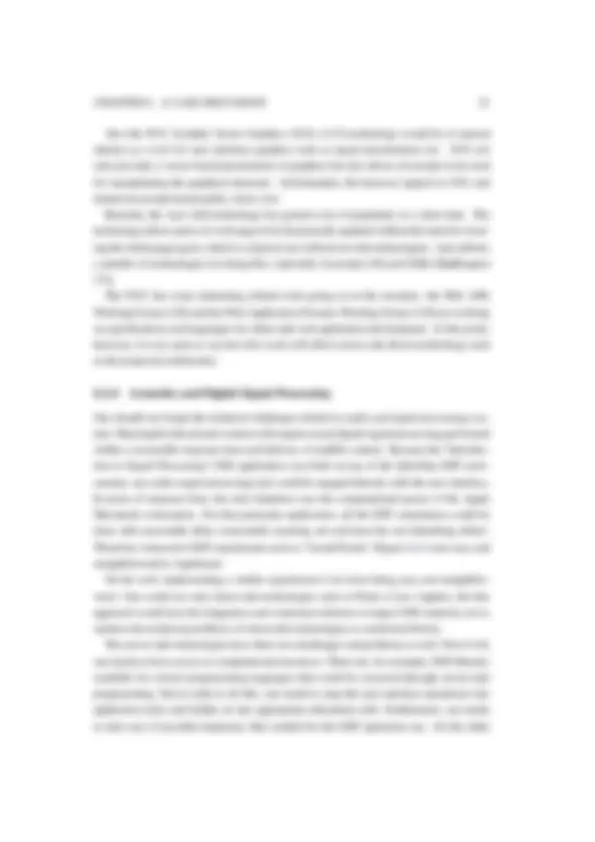
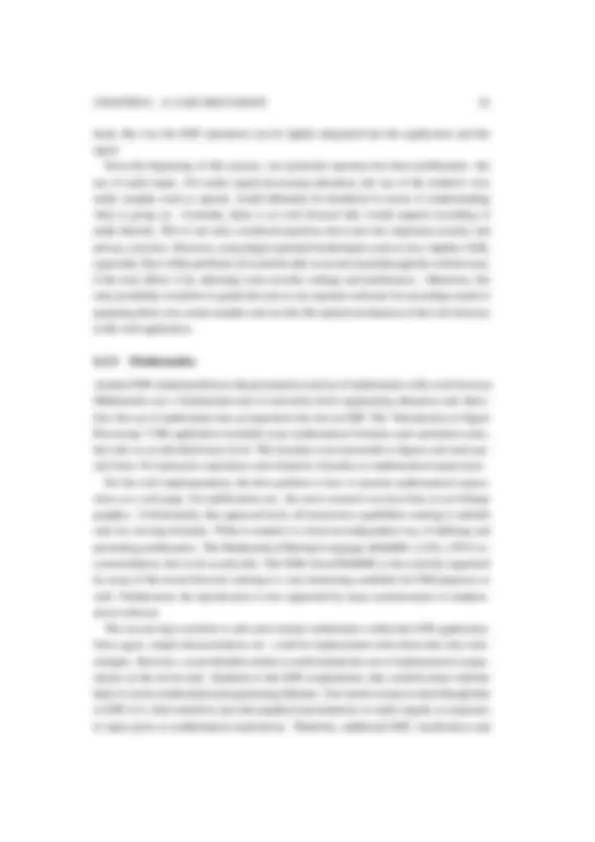
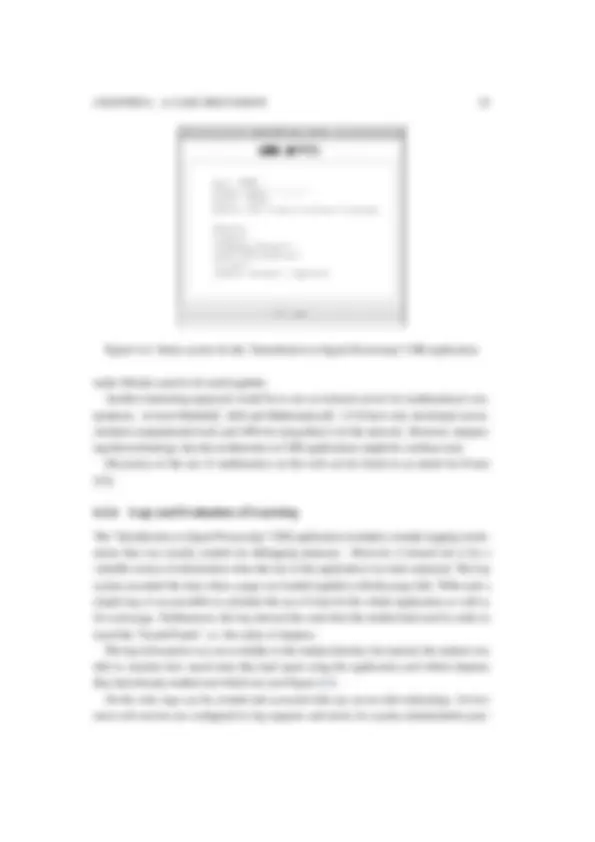
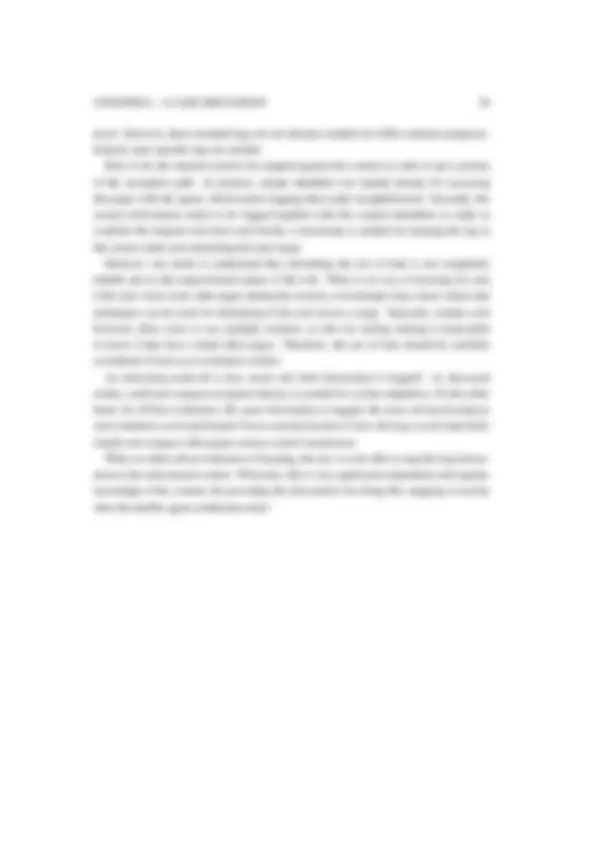
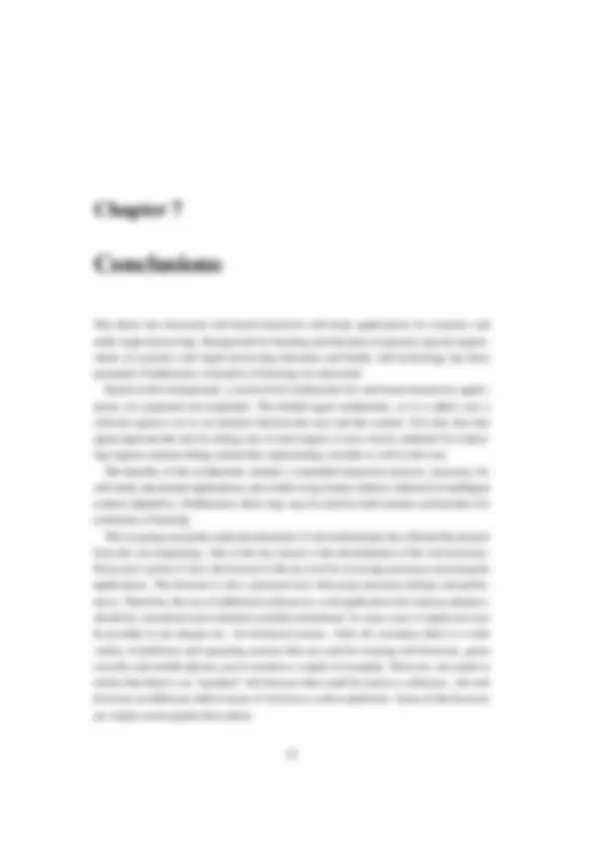


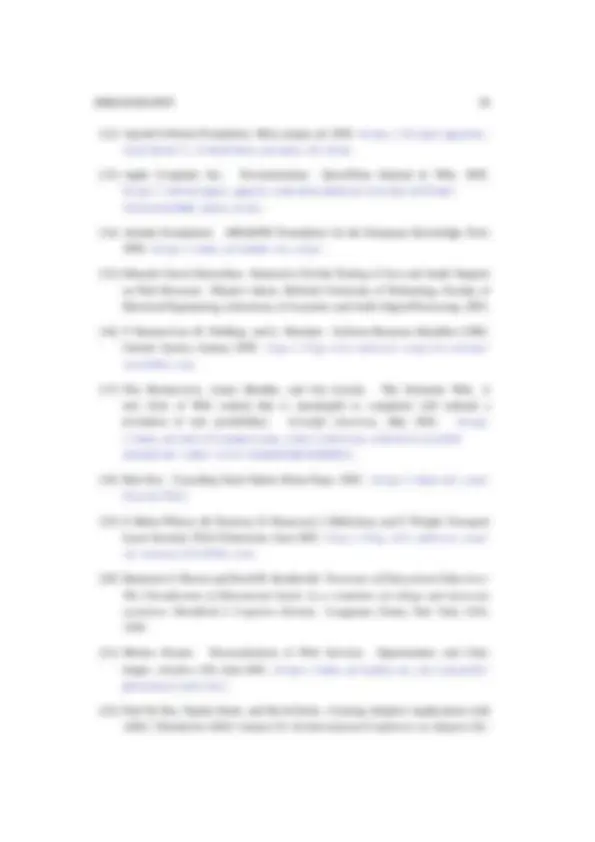
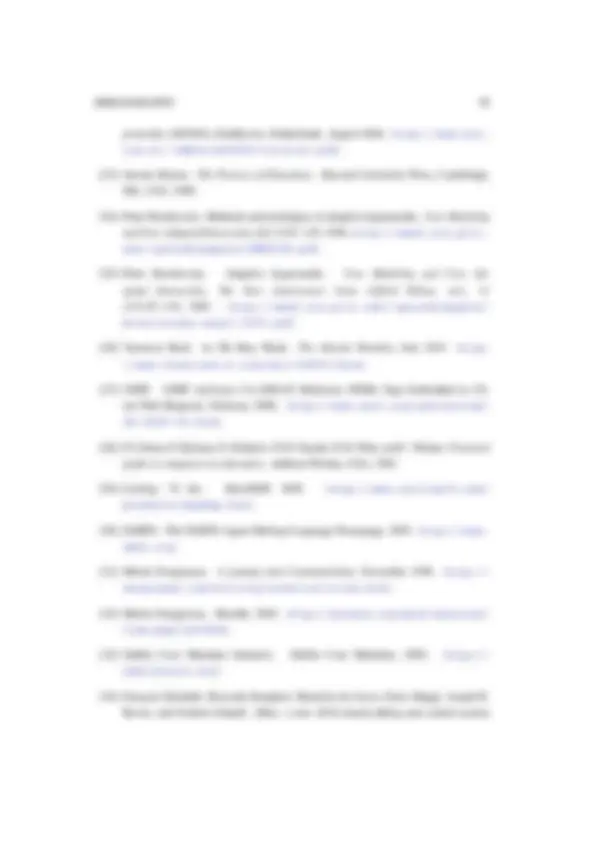
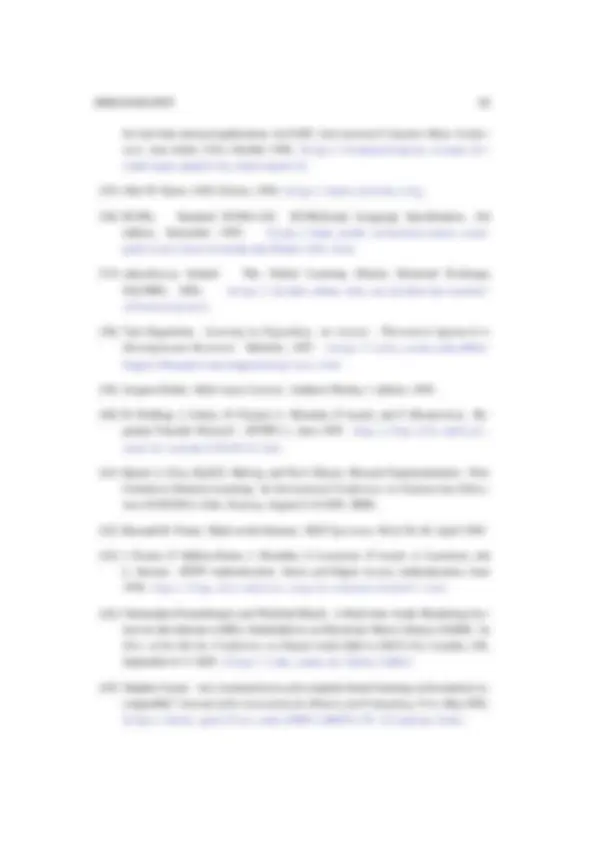
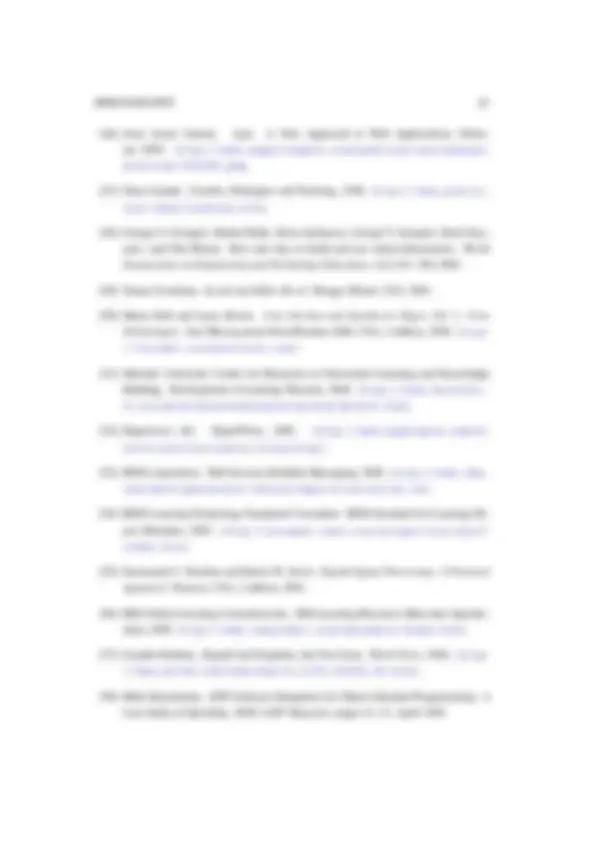
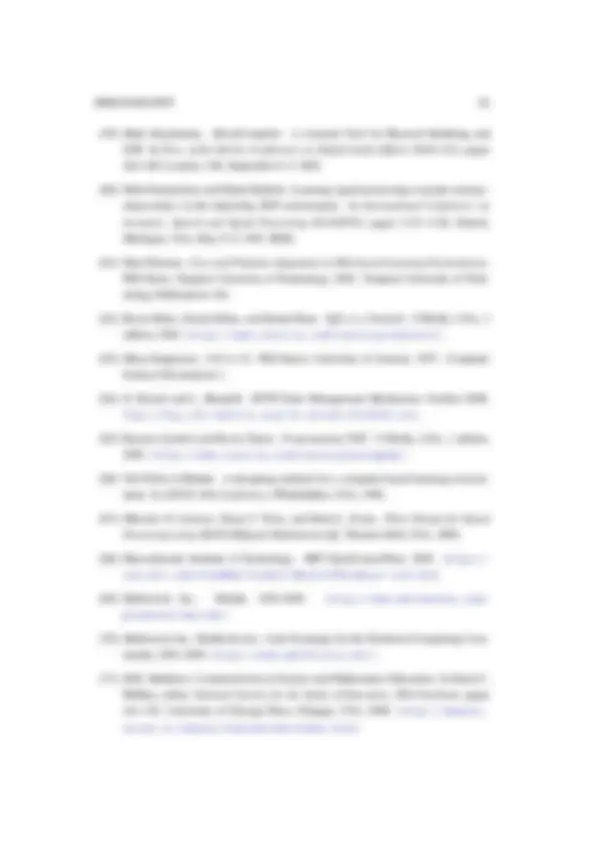
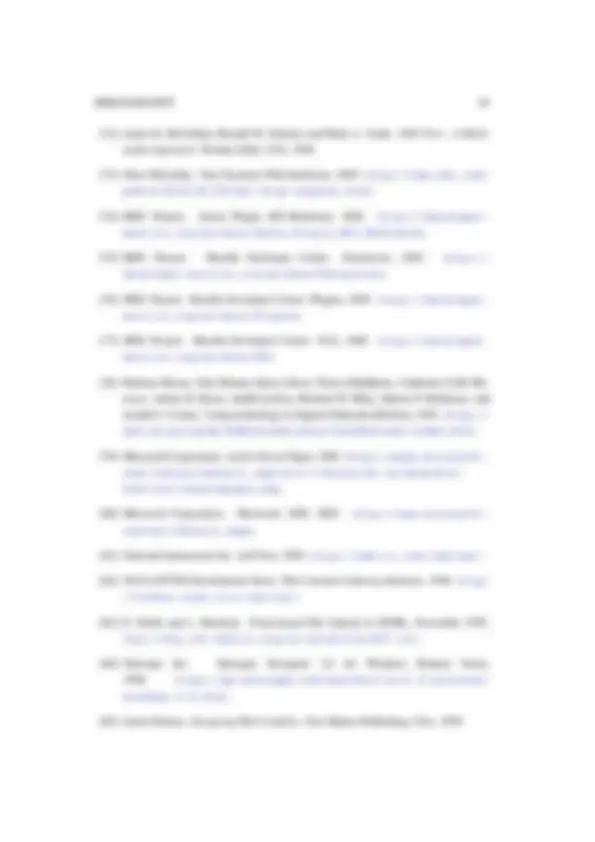
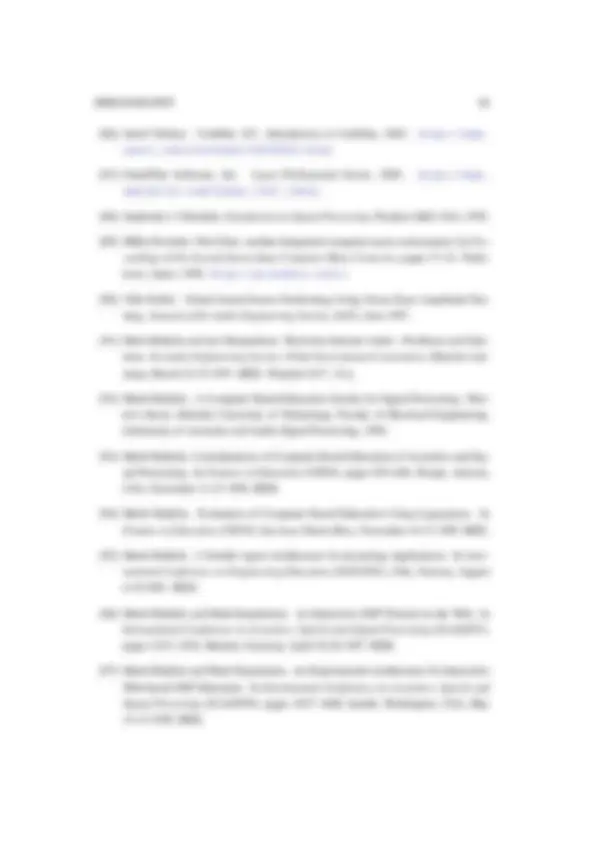
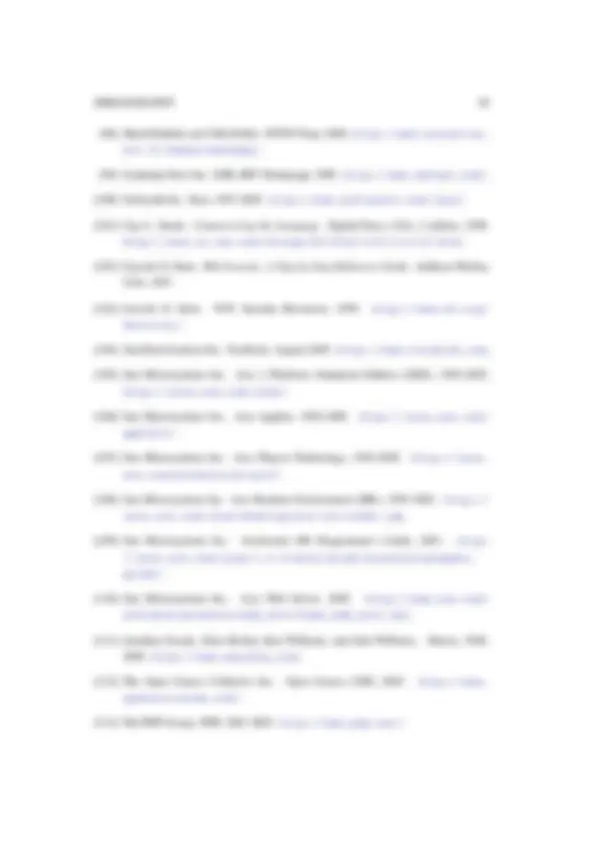
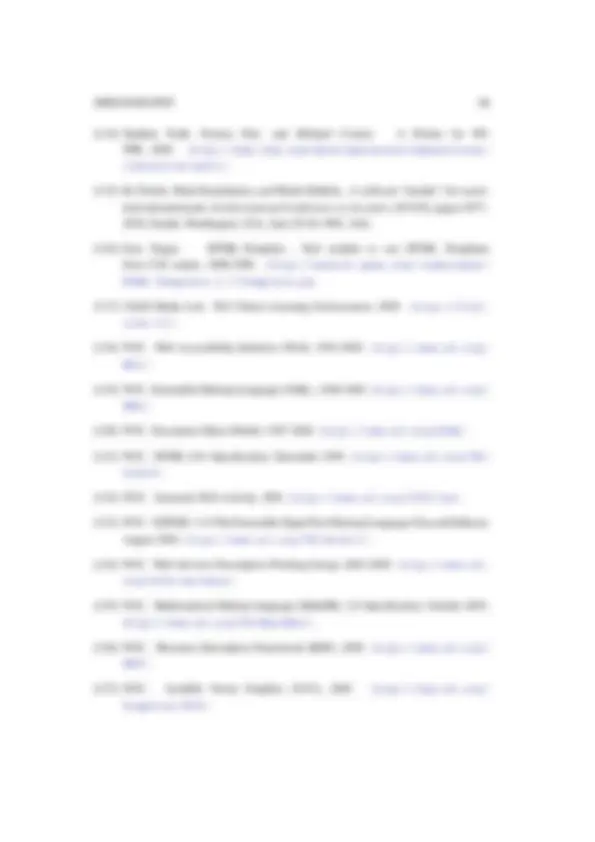
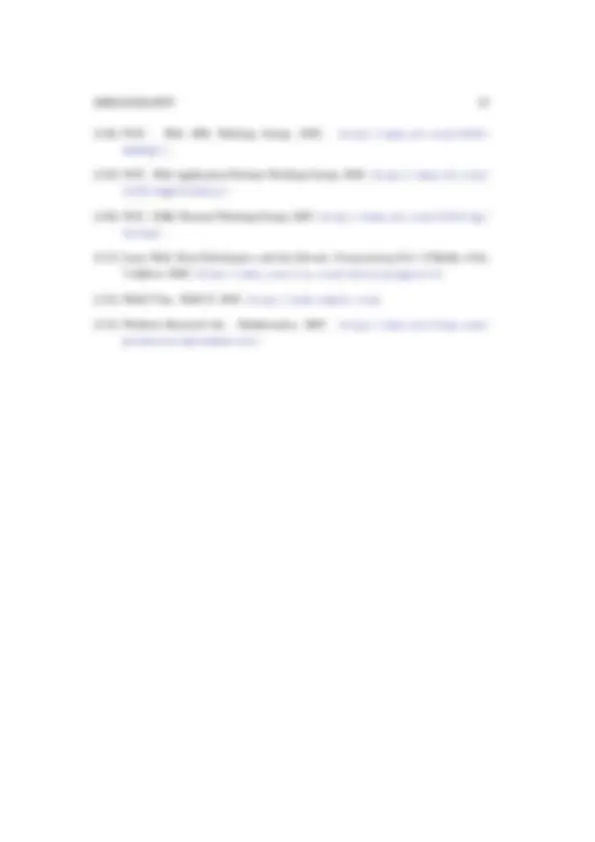


Study with the several resources on Docsity

Earn points by helping other students or get them with a premium plan


Prepare for your exams
Study with the several resources on Docsity

Earn points to download
Earn points by helping other students or get them with a premium plan
Community
Ask the community for help and clear up your study doubts
Discover the best universities in your country according to Docsity users
Free resources
Download our free guides on studying techniques, anxiety management strategies, and thesis advice from Docsity tutors
This thesis deals with computer-based education of acoustics and digital signal processing. The focus throughout the thesis is on ...
Typology: Study Guides, Projects, Research
1 / 77

This page cannot be seen from the preview
Don't miss anything!






































































Department of Electrical and Communications Engineering Laboratory of Acoustics and Audio Signal Processing
Agent-based Method for Self-study Interactive Web-
based Education
Thesis submitted in partial fulfillment of the requirements for the degree of Licentiate of Science in Technology.
Espoo, May 17th, 2006
Supervisor: Professor Matti Karjalainen
Author: Martti Rahkila
Name of the thesis: An Agent-based Method for Self-study Interactive Web-based Education Date: May 17th, 2006 Number of pages: 67 Department: Electrical and Communications Engineering Professorship: S- Supervisor: Prof. Matti Karjalainen
This thesis deals with computer-based education of acoustics and digital signal processing. The focus throughout the thesis is on interactive, self-study web-based applications even though many issues are of more general nature as well. The emphasis is especially on describing interactivity while using educational applications and the use of log information for evaluation of learning.
The goal for the thesis has been to develop a web-based solution for audio signal processing education with emphasis on advanced, intelligent interactivity.
The basis for this interactivity is the double agent architecture for web applications. The archi- tecture allows the control of the interaction process by means of logs and using them as a basis for content adaptation. Furthermore, the novelty of this method is its applicability to evaluation of learning. The log information, provided by the architecture, can be used for on-line evalu- ation of users’ requests and thus provides means for content adaptation. Furthermore, the log information can also be post-processed and used for off-line evaluation of the learning process by both teachers as well as students themselves. The latter has also pedagogical importance supporting the development of self-reflection and metacognitive skills.
Keywords: World Wide Web (WWW), Computer Based Education (CBE), interactive web ap- plications, software agents, audio technology, digital signal processing, evaluation of learning, content adaptation
i
So, it took a little longer than I expected... This project dates back all the way to the mid 1990’s. At the time, the web was something new but already showed great potential as a tool that might bring the Internet to homes and offices. Which it certainly did. But back then, it was wild frontiers and nobody knew what kind of technologies would evolve and survive within the next decade or what purposes would this marvelous tool be used for.
The development has been rapid ever since. However, amazingly, I’m still facing some of the same technical problems as ten years ago. But to me, it just proves the value of this research: the goals have been high and the technical problems challenging enough for these questions to survive the technological revolution that has changed the world around it.
To me personally, the path has been fruitful: like all good research, it has answered questions but also opened up new questions. I have been able to watch and study the development of the web both in technical terms as well as contents wise. But most importantly, my knowledge and understanding of learning itself has grown and become deeper throughout the project. Which was the reason I got interested in this work in the first place.
I wish to thank the Helsinki University of Technology as well as Tekniikan Edistämissäätiö for supporting this work during the first four years. Furthermore, I’d like to thank Petter ja Margit Forsströmin säätiö for their scholarship.
Furthermore, I’d like to express my warmest thanks to my supervisor, professor Matti Kar- jalainen. I have had a pleasure working with him for several years, not only on this project but in many others as well. I truly admire his enthusiasm and open mind.
I’d also like to thank professor Lauri Savioja, who has been of help especially during the last few months of finalizing this thesis. I have known Lauri for several years as well and he is one of kindest persons I have ever met. His comments have been most valuable and encouraged me to try to improve the thesis.
There are numerous wonderful people that I have met during the years at the TKK Acoustics lab. It would be meaningless to try to list all your names: the list would be longer than this
iii
thesis and, besides, you know who you are anyway. You have all taught me a lot for which I thank you for. The same goes for my loved ones as well.
But it is not over yet! There are still many problems to be solved, many questions to be answered. Hopefully, the project continues.
Helsinki, May 17th, 2006
Martti Rahkila
iv
HTML HyperText Markup Language HTTP HyperText Transfer Protocol HTTPR Reliable HTTP J2EE Java2 Enterprise Edition JRE Java Runtime Environment JSP Java Server Pages JVM Java Virtual Machine MP3 MPEG-1 Layer III MPEG Moving Pictures Expert Group PDF Portable Document Format RDF Resource Description Framework RFC Request For Comments SMIL Synchronized Multimedia Integration Language SQL Structured Query Language SVG Scalable Vector Graphics UML Unified Modeling Language URI Unified Resource Identificator URL Unified Resource Locator W3C World Wide Web Consortium WBE Web Based Education WBT Web Based Training WSDL Web Service Definition Language WS-RM Web Services Reliable Messaging WWW, web World Wide Web XML Extensible Markup Language XMLP XML Protocol
ix
This thesis discusses web-based education in acoustics and digital signal processing. The focus throughout the thesis is on the technical design of interactive self-study applications even though many issues discussed are also of more general nature. The key issue and novelty of the thesis is the evaluation of learning based on logging of users’ actions. In order to do this, an intelligent, agent-based system architecture is presented. The thesis is largely based on conference articles written by the author [95] [94] [93] [97] [96].
1.1 Project background
The background of this project dates all the way back to years 1996-1997. At the time, the web was something completely new: a hypermedia platform showing great promise but yet immature both technically and contents wise. The number one browser was Netscape 2. which presented many technological innovations [84], later to become more or less open web standards. Examples of such technologies are JavaScript [49] and support for Java Applets [106]. Technologically this was the beginning era of the Internet revolution. Nobody could tell which of these new technologies would be useful and what they would be used for eventually. Every new browser version included new features and technologies and the de- velopment of server-side software was equally fast. It took about 5 years until the situation stabilized technologically and W3C (World Wide Web Consortium) and other open stand- ards became the real backbone of the web. During that time, also the new media business was born, and almost destroyed as well by the wild market expectations. However, dur- ing that time the Internet grew out from universities and research institutes conquering the business world as well as homes and ordinary consumers.
1.3 Structure of the thesis
Figure 1.1 represents the background and scope of the thesis. Three major areas are con- sidered: pedagogical background to provide a solid ground for learning and studying, acoustics and audio signal processing as the content of the educational material with dis- cussion of their special requirements and, finally, web technology as the platform for im- plementation. Based on all three, a method for creating and providing such content is proposed. Therefore, the thesis first presents the pedagogical background followed by discussion of acoustics and audio signal processing as educational content and technical requirements. After these, the field of web technology is introduced and discussed from the point of view of interactive applications. Lastly, a solution proposal is presented with discussion of im- plementation issues as well as conclusions and guidelines for future work. The thesis has been written with university level education in mind. Especially teachers of acoustics, digital signal processing and similar fields hopefully will find this work of interest. However, even though the proposed architecture has been designed primarily for educational applications, similar features such as log-driven content adaptation may be of interest in other application areas as well.
Education: teaching, studying and learning is in itself a wide area of research and practice. There are numerous ways to teach and study, but learning is the ultimate key and goal for which they all aim for. This thesis deals with only a narrow field, web-based self-study education.
2.1 Theories of Learning
Throughout the years, many theories of learning have been developed [63]. These the- ories emphasize and explore different psychological aspects: after all, learning is indeed fundamental to the human nature. However, learning is still somewhat a mystery, at least philosophically speaking. Based on pedagogical studies and several years of teaching experience, the so-called cognitive-constructive view of learning [23], [71] has been the guideline for this work. This theory claims that learning is constructing: new things are constructed using previous knowledge as "building blocks". The learner tries to analyze, describe and evaluate a new concept by searching for already learned things and using them to construct the new one. This learning process inside one’s head is the cognitive part of the theory, and the goal for all types of education is to start and maintain this process. However, in the cognitive-constructive view of learning, also social contacts play an im- portant role. The construction process is fed and accelerated by discussing the topic with others because this way one can reflect his/her thoughts. In fact, the theory of construc- tionism asserts that constructivism occurs especially well when the learner is engaged in constructing something for others to see [31]. Naturally, learning theories have an important role in the development of Computer Based Education (CBE). In many cases, CBE has been a useful test method for learning
and drill-and-practice programs [28] through simple text terminals. In the 1980’s, the invasion of personal computers into homes and offices allowed also the growth of multimedia-based CBE. Numerous tools and applications were developed for various purposes [57],[104]. Hypertext and hypermedia [26] became reality. Design meth- ods for educational applications were developed and CD-ROMs became the most popular media for distributing these applications. However, the growth of the Internet and especially the World Wide Web (WWW, web) in the mid 1990’s, launched a new era in CBE. Compared to earlier, the Hypertext Markup Language (HTML) [121] was an easy way to start developing hypermedia applications and the Internet made it possible to distribute and access those applications from anywhere. However, the CD-ROM-based approach allowed more control over the computer resources and stable run-time environments compared to Internet technologies. Even today the web still does not provide similar technical establishment for CBE than CD-ROM-based solu- tions, but despite these limitations, the web has become a de-facto hypermedia platform due to its easiness of use and sharing of resources over the network.
One way of classifying CBE is through the educational field of interest. Because the ways how computer technology can be used for educational purposes, depend on the content, it is natural that these methods have been developed and studied within this field of interest. Therefore, we may talk about computer-based mathematics education, computer-based lan- guage education etc. In this case, the term does not classify the CBE methods themselves but restricts the methods to ones appropriate in that field. For instance the CBE methods and their requirements for mathematics education are quite different from those of lan- guage education. Another example: this thesis deals with acoustics and DSP education, both fields presenting their own requirements for meaningful use of CBE. This classifica- tion by the content field is especially important, because in CBE, the content defines which methods, content types and, most importantly, what kind of interaction is appropriate and needed. Another classification is to categorize the CBE by type or method such as drill, game, modeling, simulation, problem solving etc. This categorization is independent of the topic and methods can be used in various fields of interest. However, typically some methods are more suitable for some topics than the others. For instance drill and practice have a long tradition in the language education whereas simulations, modeling and problem solving are standard methods engineering education, computer-based or not. Another way to classify CBE is by purpose or goal. For instance we can divide CBE into self-study applications and learning resources and collaborative learning environments and
tools. Or we can divide the use of CBE into basic study material and testing, for example computer exams. In the case of basic study material, CBE allows the power of multimedia to be used for providing animations or perhaps audible examples together with text and pictures. Nevertheless, the goal is somewhat the same as for text books. In computer exams, the purpose is to evaluate learning regardless of the source used. Naturally, we can also classify CBE-based on numerous technical criteria such as the software requirements etc. One of the most important technical categorizations is whether network, especially the Internet, is used or not and if so, to what extent. Furthermore, like all education, the Bloom’s classic taxonomy [20] can be applied for CBE classifications as well!
The Internet and World Wide Web can be used for teaching and studying in many ways. For instance, the learners can use the web search engines for finding information and study material either for self-study purposes or as course tasks. Nowadays it is common that all courses have their own home pages with lecture material, instructions etc. Some universities have even decided to start putting all course material available on the web [68]. The development of interactive technologies for web has allowed various collaborative applications and learning environments. Moodle [32] and FLE3 [117] are examples of tools that emphasize the social aspects of learning. With the help of chat applications, message boards and other collaboration tools it is easy to form study groups even with long distances. Besides the above mentioned free tools there are also various commercial tools for building these learning environments, for example WebCT [132] and Hyperwave [52]. Another form of distance learning is making audio and video recordings of lectures and making them available on the Internet, either on-line or off-line. This kind of systems require special software tools such as media players and streaming applications. Video- conferencing has become quite popular though, not only for educational purposes but for general purpose meetings as well.
Self-studying is a special form of distance learning. There are two different ways to explore the Internet. Firstly, the learner may browse and find information when needed. With the help of fast and intelligent search engines, and on-line encyclopedia such as Wikipedia [9] it is fairly easy to find answers to questions. However, when thinking of learning, this approach has some limitations. For example, currently it is quite difficult to evaluate the reliability and origin of the information. Therefore, there is a risk of studying and learning
learner. From the teacher’s point of view, evaluation of learning aims to determine whether the students have achieved the goals set for a particular topic or course. Typically this is tested somehow and based on the test results, evaluation is performed. This kind of method is al- ways restricted to the test, however. Many times the students may actually learn something completely different from those that are tested. Furthermore, testing does not necessarily take the students’ individual needs into account. However, when properly designed, the testing method is a practical and even fairly reliable way of evaluating learning. From student’s point of view, taking a test is only a small part of the learning. For example during a course, the students may adapt and understand various things that are not key goals or even related to the core contents of the course. Therefore self-evaluation and self-reflection are important parts of learning. This requires metacognitive skills which may be achieved by experience and with the help of studying methods such as the learning diary, portfolio etc. Whereas the testing focuses on measuring whether certain goals have been reached or not, self-evaluation aims for deeper understanding of what and how one has actually learned. Still, the testing method is important to students as well. The test results are an important feedback channel and have great effect on how students will go on with their studies.
Computer-based education makes it possible to automatize, at least partly, the testing pro- cess. If the test questions are limited to simple, unambiguous answers, it is possible to directly evaluate the results. This kind of approach is fast and gives the students immediate feedback. However, the applicability of this kind of tests is somewhat questionable since in most cases, the test would be too limited with respect to the course or topic. Another approach is to use computers for gathering the results and allow the teacher to evaluate the answers. This method allows wide selection of question types to be used in the test, but it only helps in getting the answers in a compact way. Otherwise, the method is similar to standard exams. Somewhere in between is a "semi-automatic" approach, where software is used for gath- ering the results as well as partially evaluating them. This kind of approach is nowadays perhaps the most popular in the field of computer assisted testing and exams. This thesis presents a method for semi-automatic evaluation of learning, which is based on monitoring and evaluating the users’ path and actions when studying a self-study applic- ation. This method provides a view of the studying process thus giving also some insight on the learning process itself, not only the results. Additional information can be found in chapter 5.
In this chapter acoustics and audio signal processing are presented as educational fields of interest in general and as content topics for CBE and web-based education. The goal is to provide background information on what kind of requirements they present to educational applications and what kind of tools are commonly used for educational purposes in these fields.
3.1 Special Requirements
Acoustics and audio signal processing are fields of special interest to education. First of all, it is obvious that the use of sound is involved in all education in these areas. Along with mathematics, figures and text, audible examples are needed. With the web platform, use of sound presents special technical challenges and requirements that are discussed in the later chapters [93]. Secondly, in any practical work related to these areas, digital signal processing (DSP) is used as a tool. Therefore, in universities all over the world various DSP and numerical tools are used not only for research work but also for education as well. In fact, for many university students, learning DSP or audio signal processing actually means writing code and trying it out in addition to standard lectures and textbooks. This means that also basic programming skills are needed.
In order to teach and learn sound, one must use sound. This practical fact should be taken into account in all education of acoustics and audio signal processing. However, it also
10